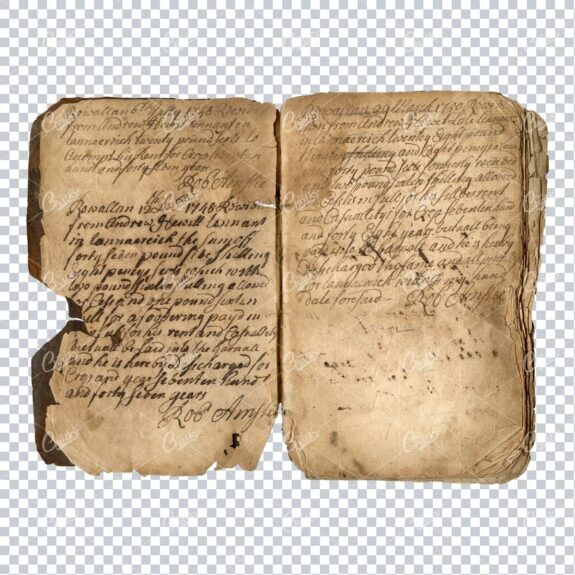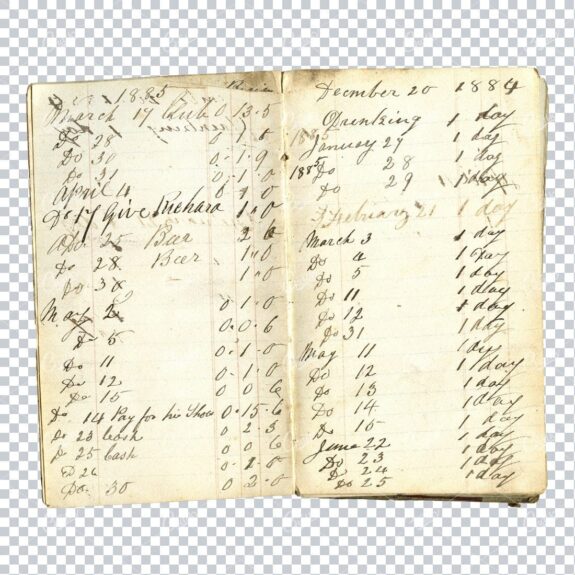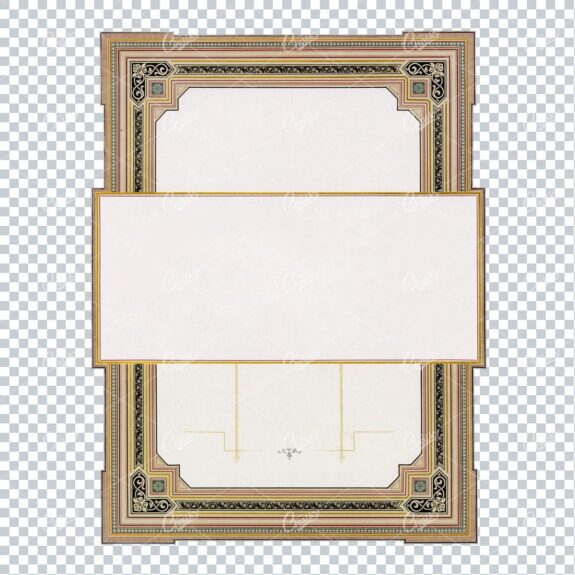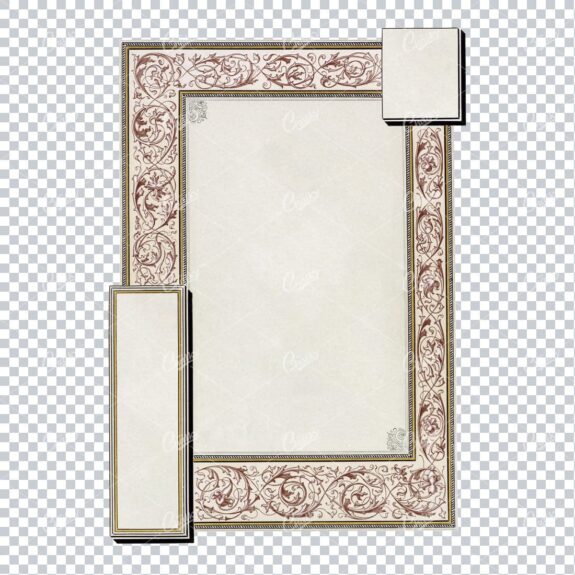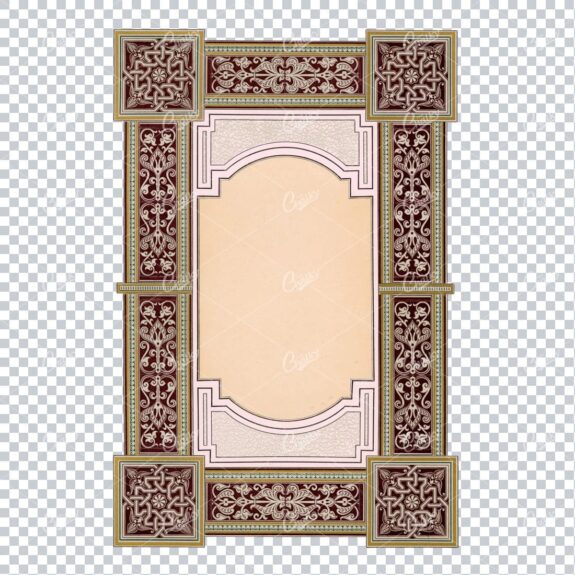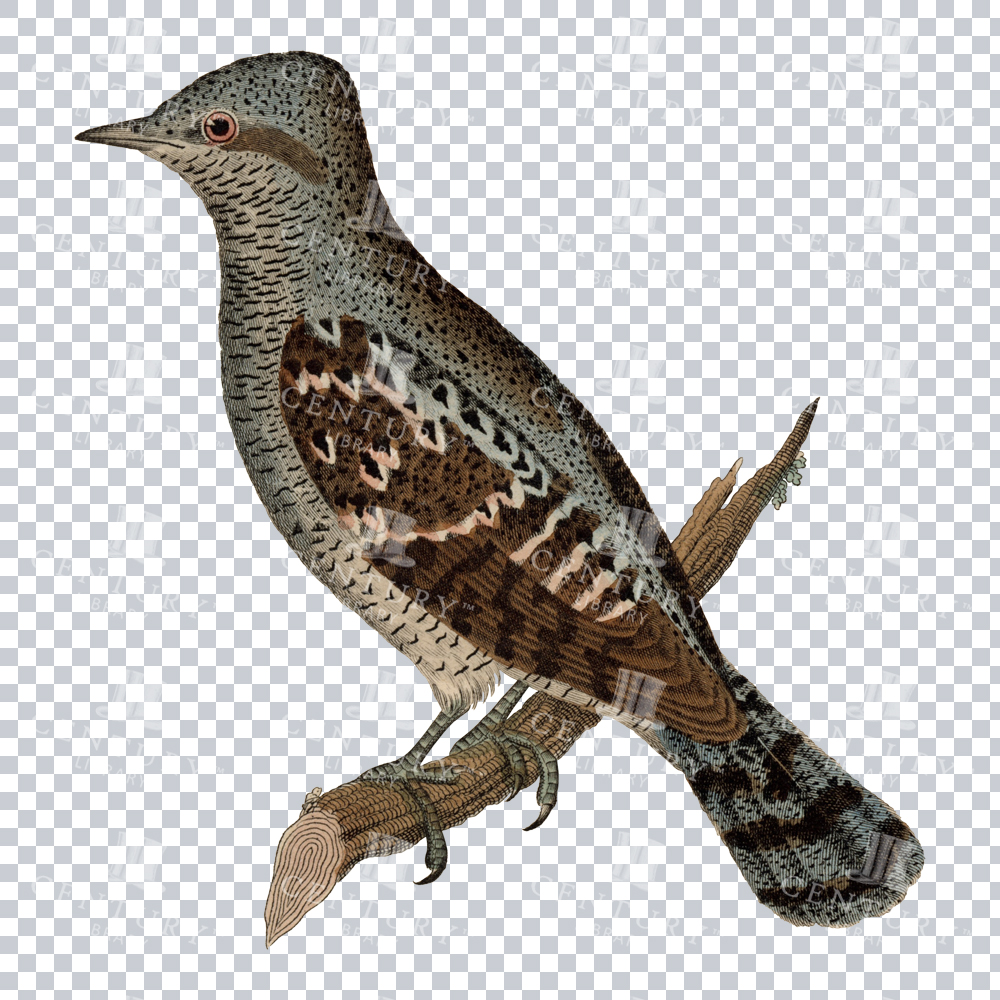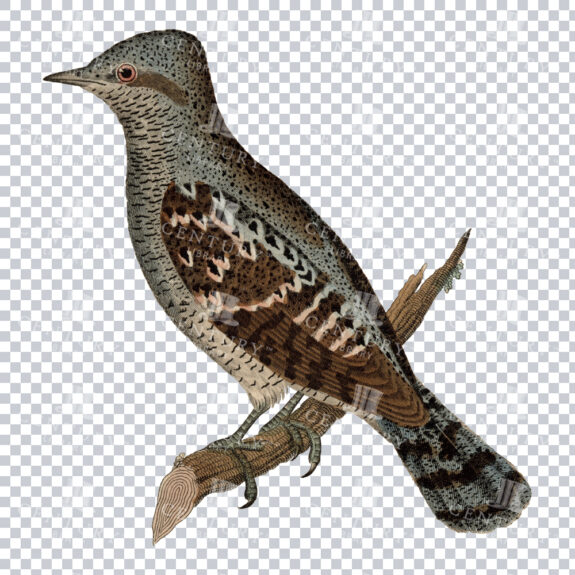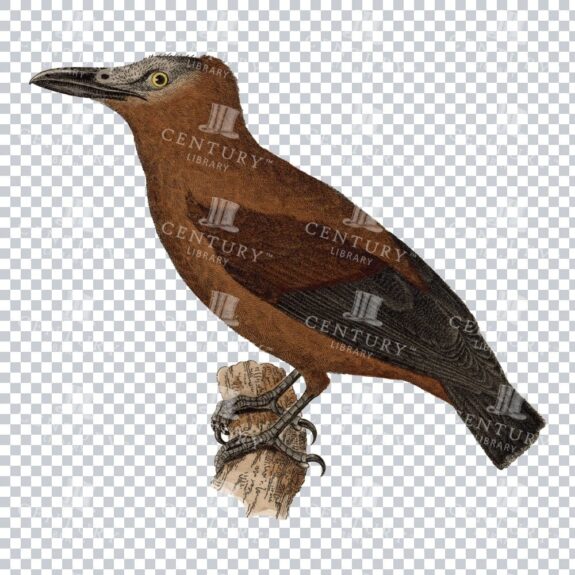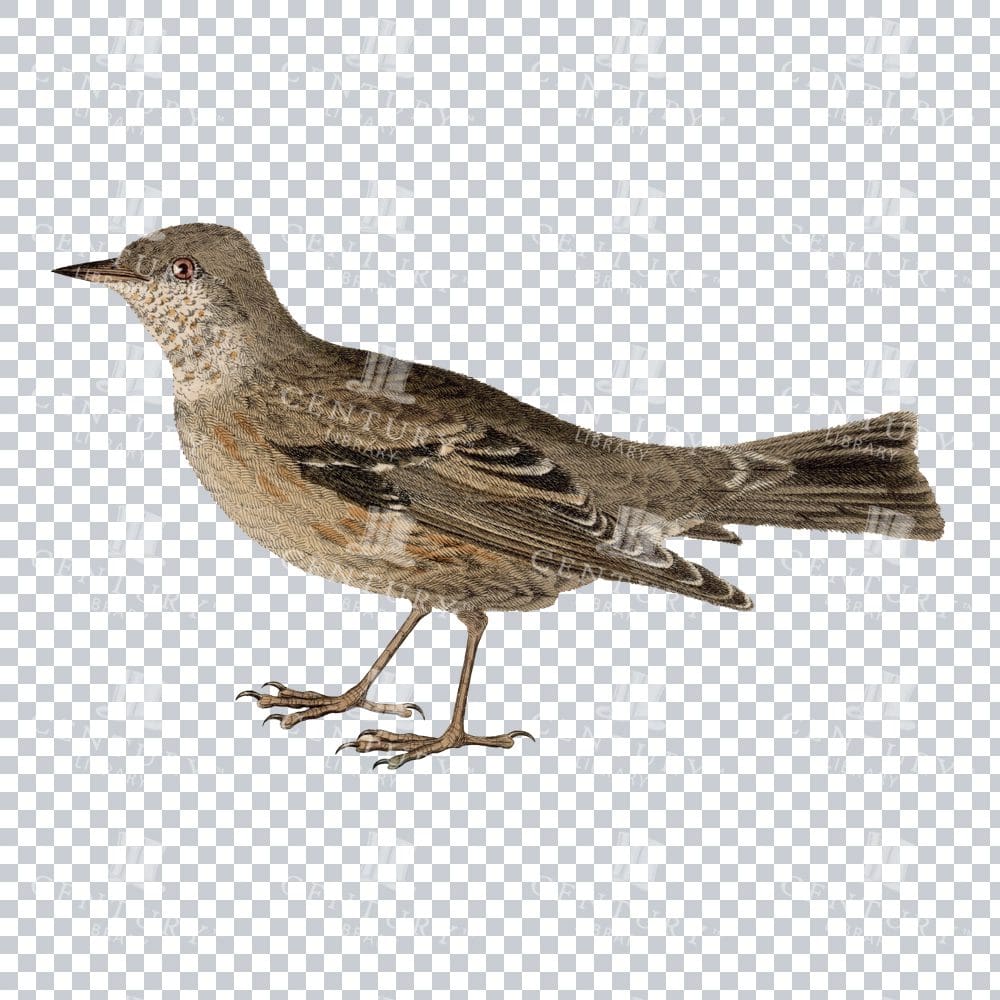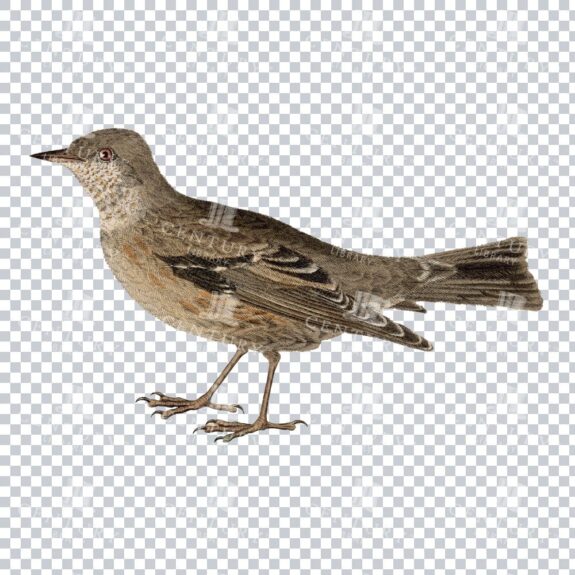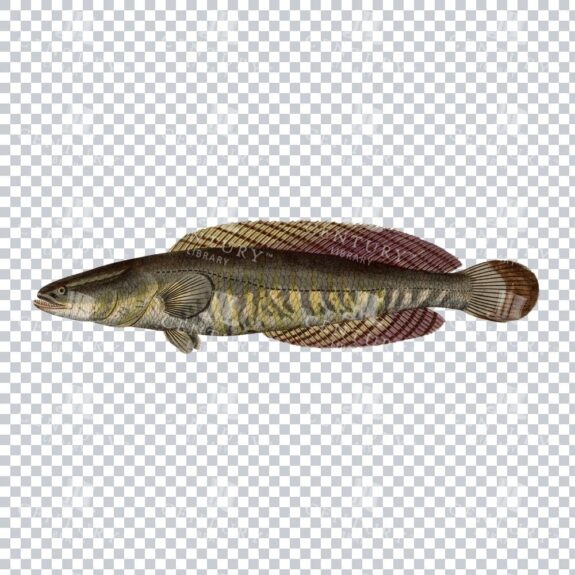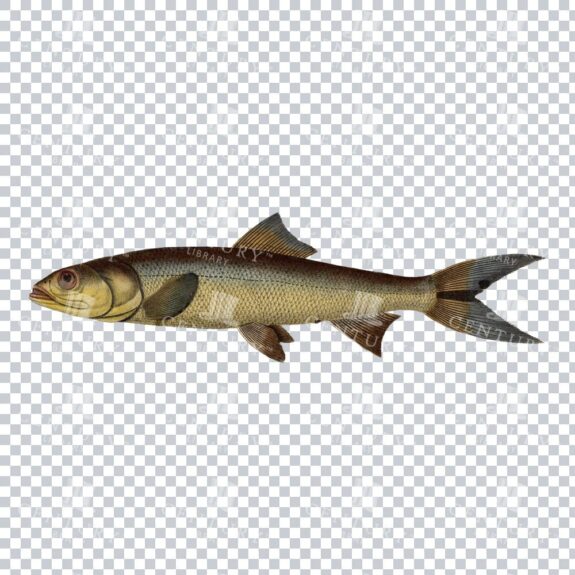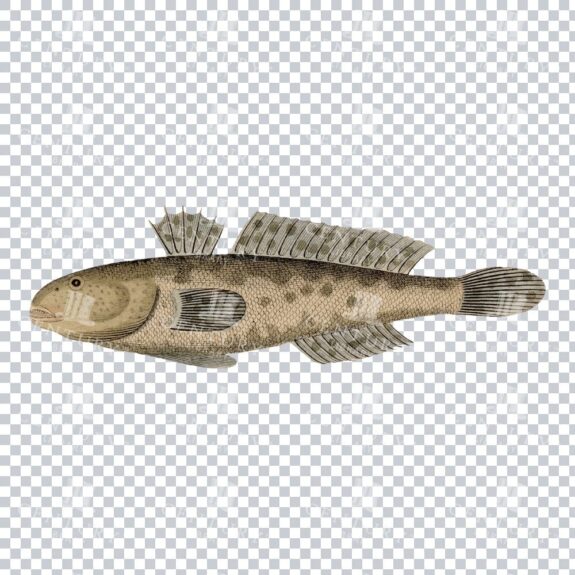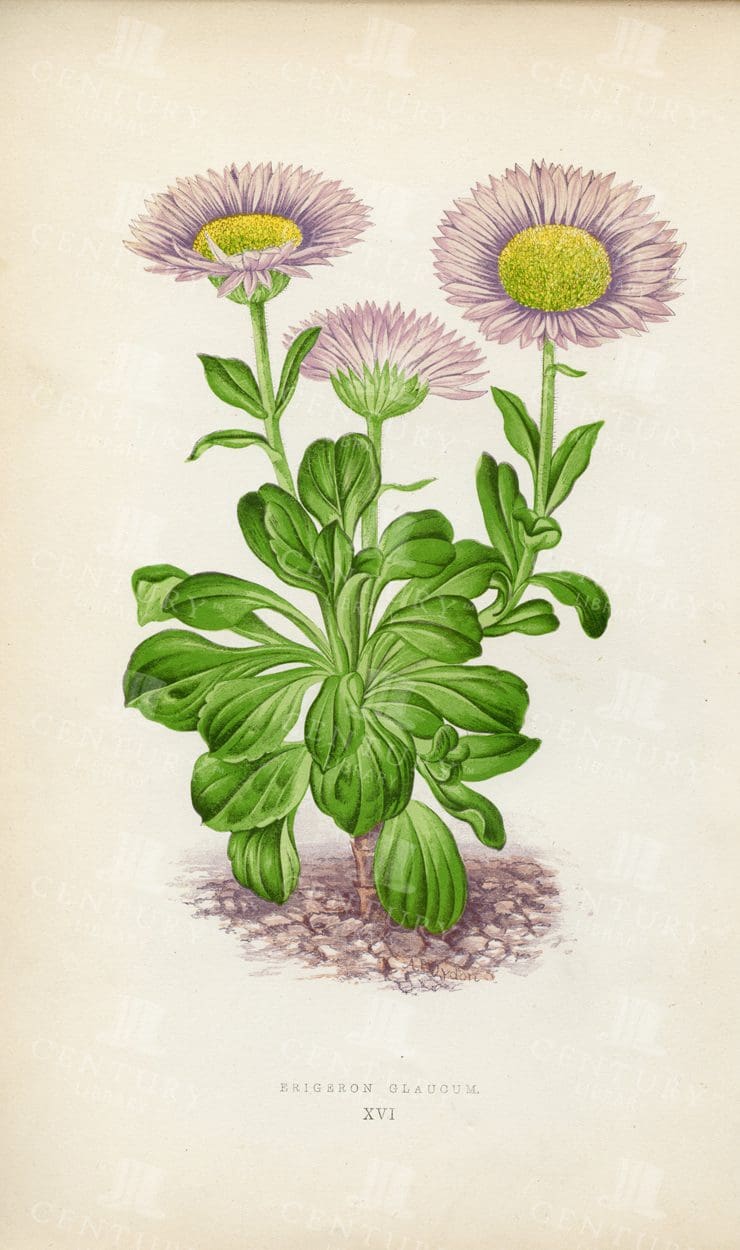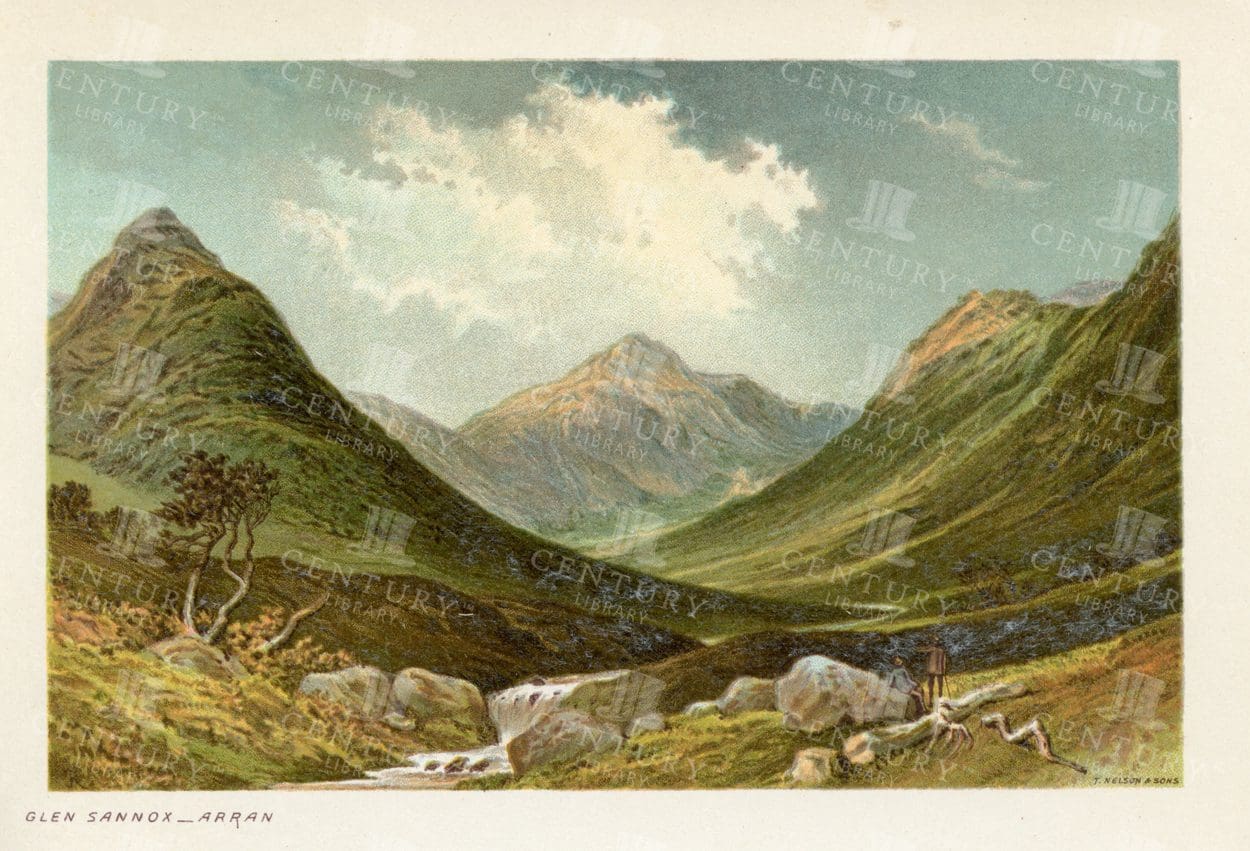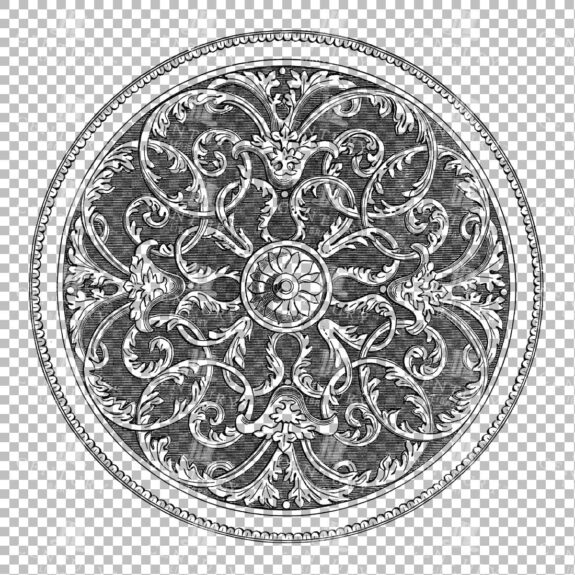
Search
Premium Vintage Stock Images
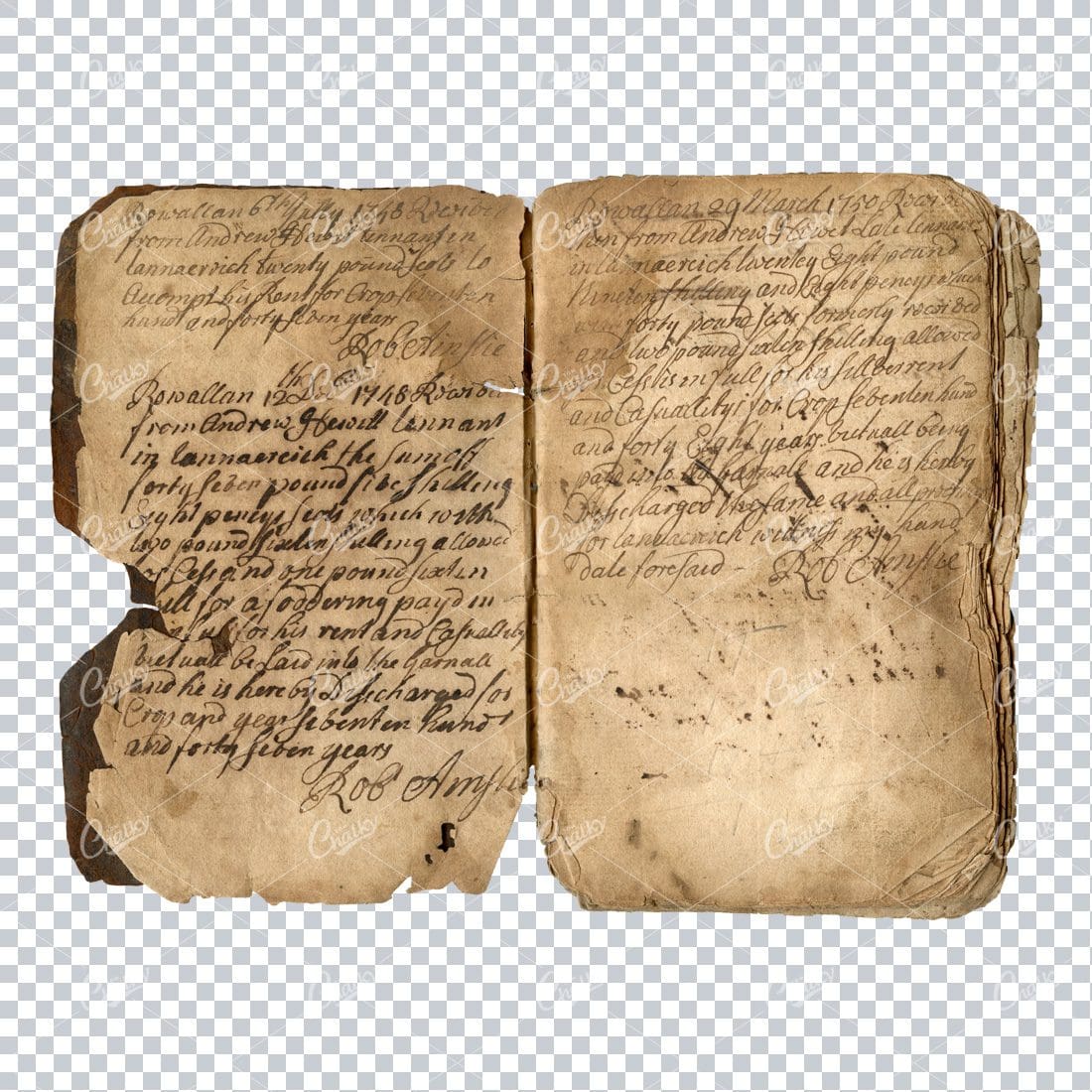

Aged with Beautiful Petina – Antique Handwritten Book Scan No.17
- License Info
- Resolution: 10035px x 7569px
From this collection
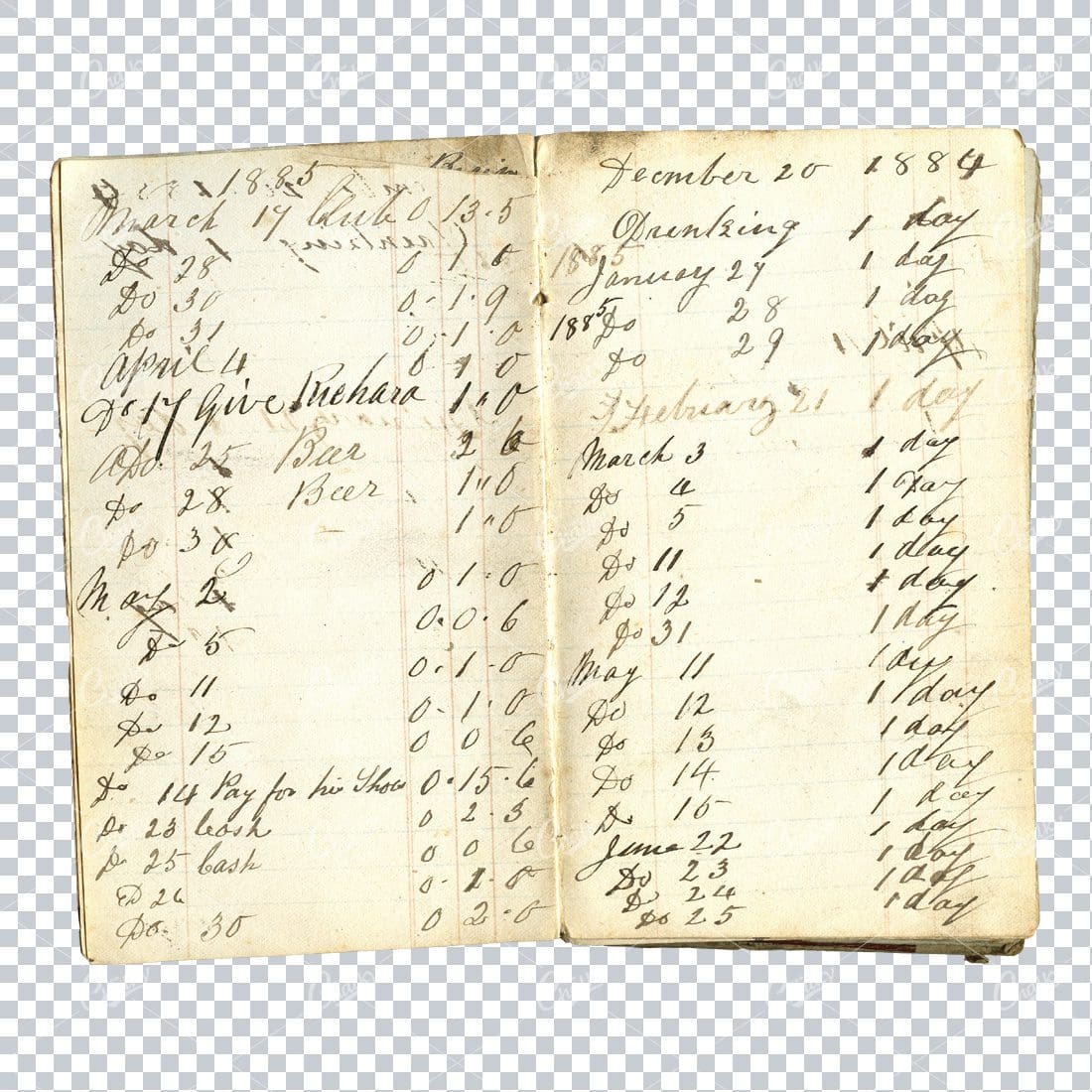

Aged with Beautiful Petina – Antique Handwritten Book Scan No.2
- License Info
- Resolution: 4545px x 3838px
From this collection


Aged and Worn Antique Leather Book Cover Texture No.1
- License Info
- Resolution: 3500px x 4951px
From this collection
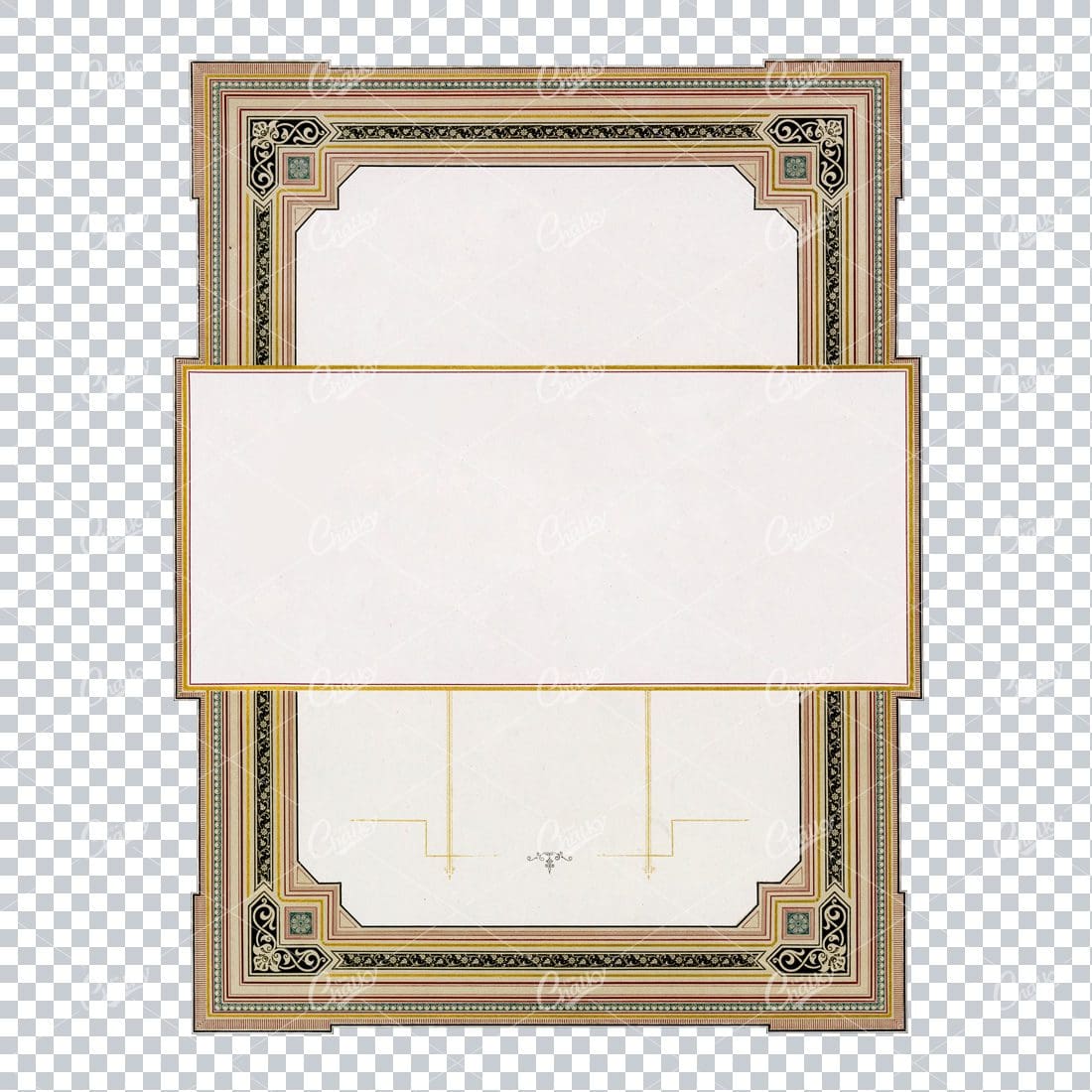

Decorative and Detailed Antique Frame / Border – Perfect for Invitations and Packaging No.26
- License Info
- Resolution: 6937px x 8869px
From this collection


Decorative and Detailed Antique Frame / Border – Perfect for Invitations and Packaging No.25
- License Info
- Resolution: 6190px x 8472px
From this collection
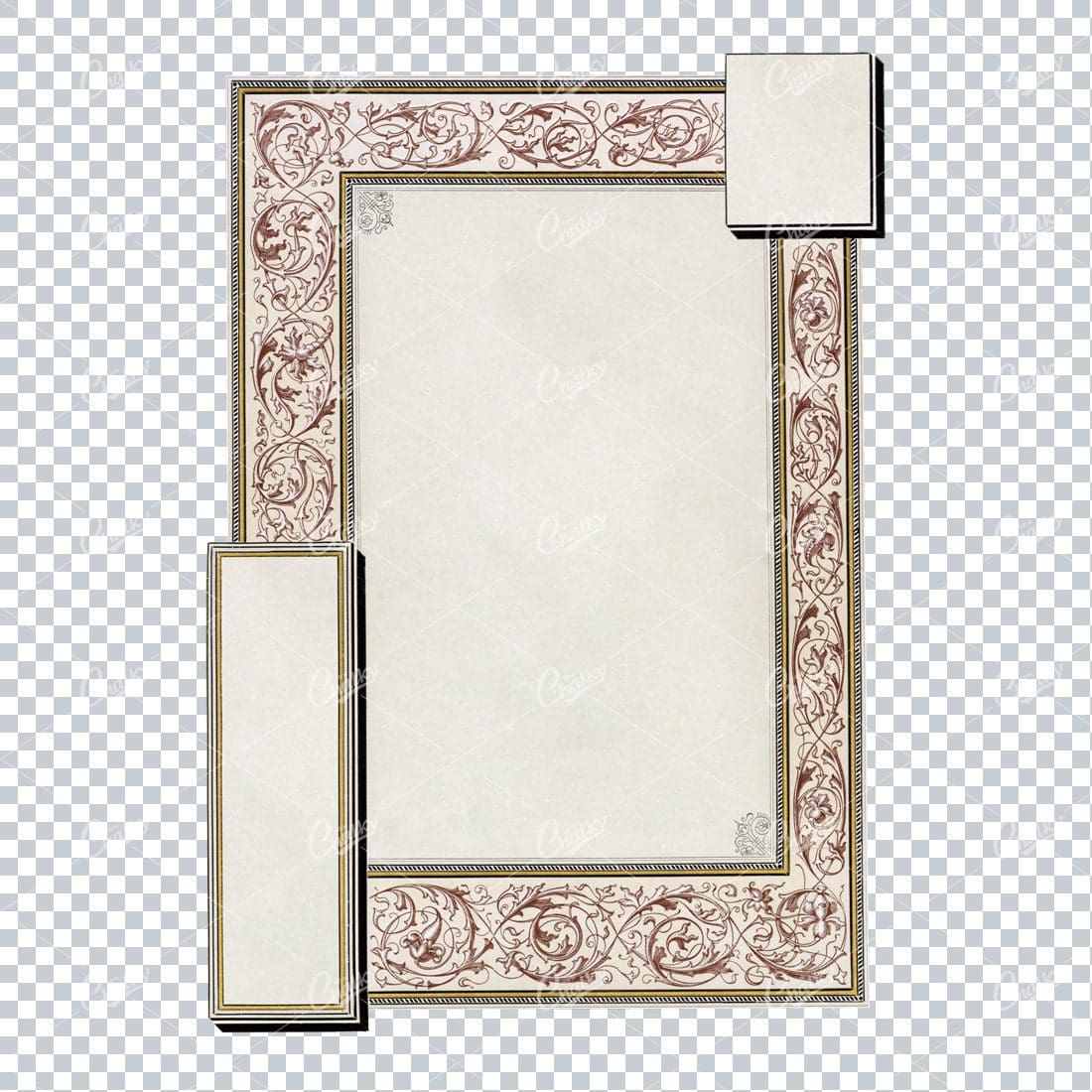

Decorative and Detailed Antique Frame / Border – Perfect for Invitations and Packaging No.22
- License Info
- Resolution: 6192px x 8929px
From this collection
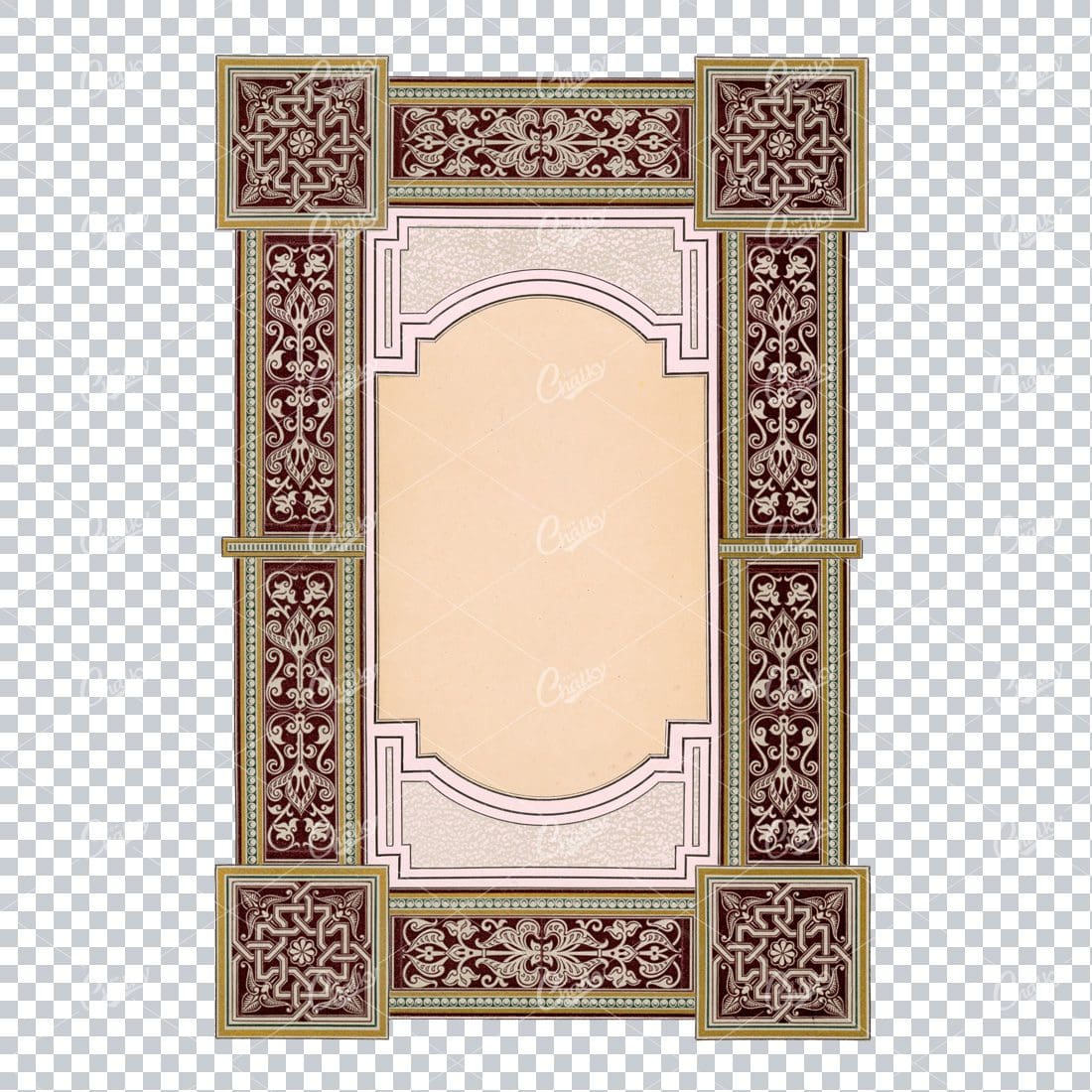

Decorative and Detailed Antique Frame / Border – Perfect for Invitations and Packaging No.7
- License Info
- Resolution: 4553px x 6781px
From this collection
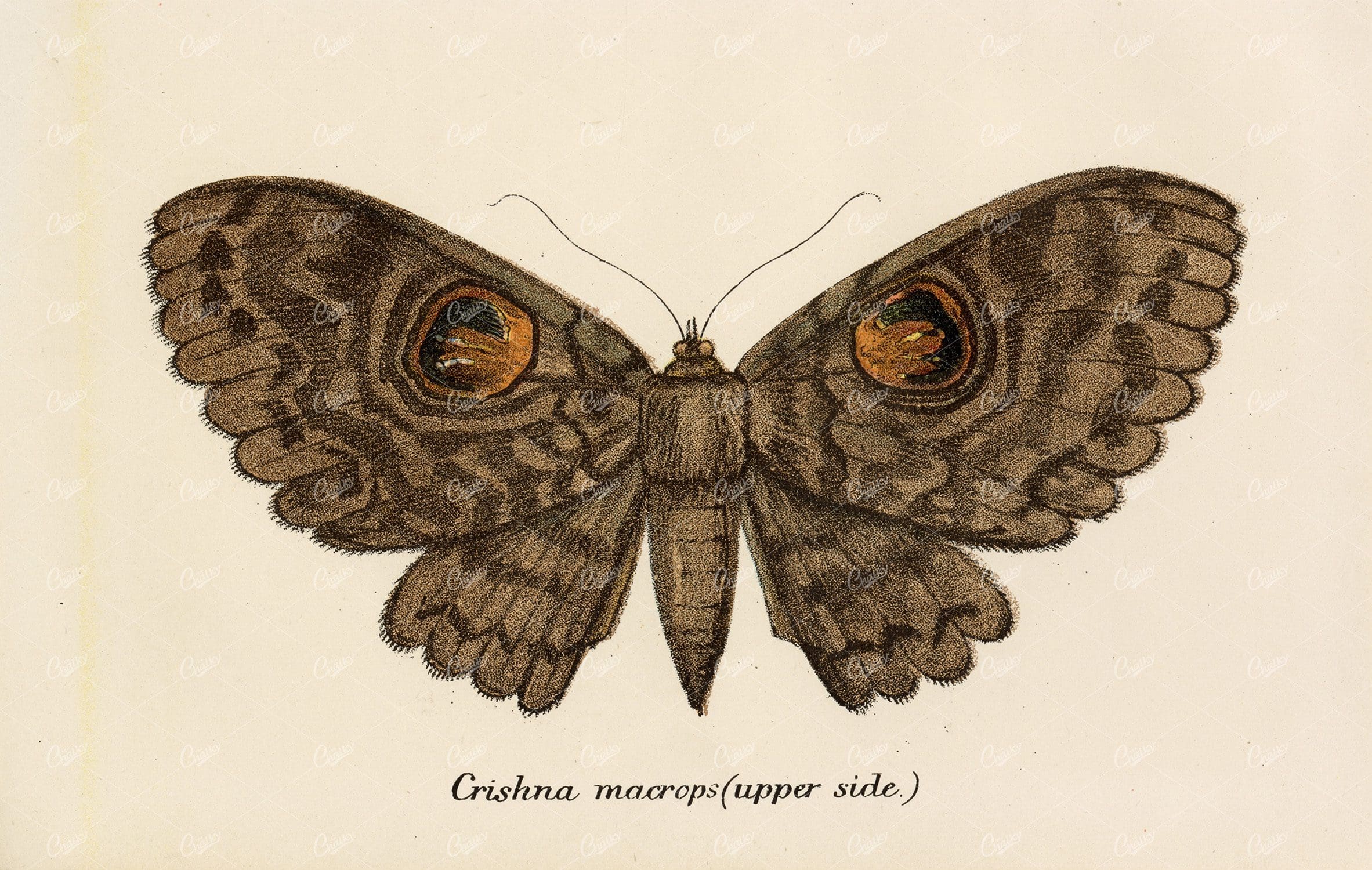

Vintage Coloured Print of the Crishna Macrops Moth (upper side) – 1896
- License Info
- Resolution: 6110px x 3875px
- Year of Print: 1896
- Artist: Edward Lloyd
From this collection
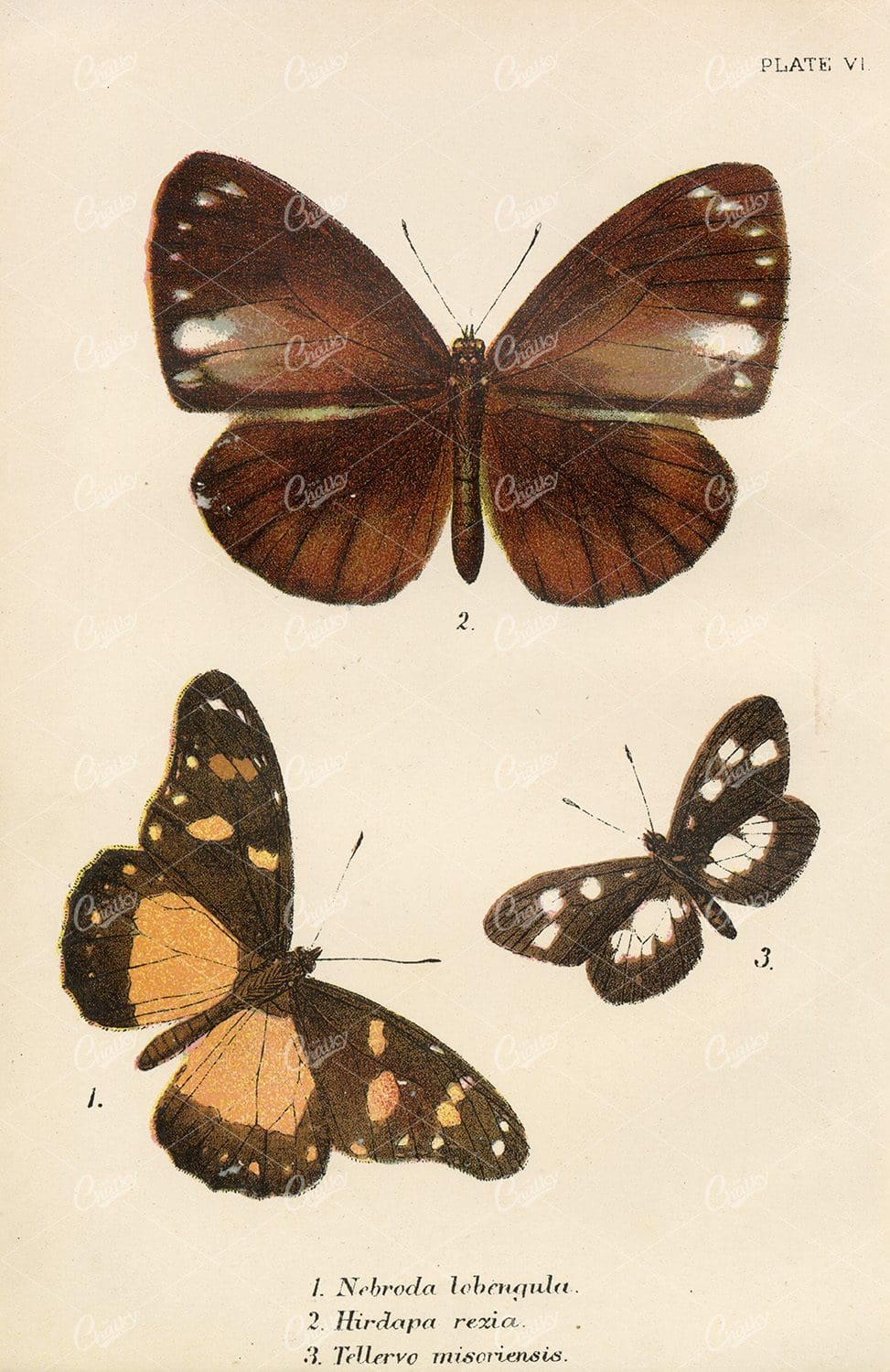

Lloyd’s Natural History – Vintage Coloured Butterfly Print 1896
- License Info
- Resolution: 4050px x 6242px
- Year of Print: 1896
- Artist: Edward Lloyd
From this collection
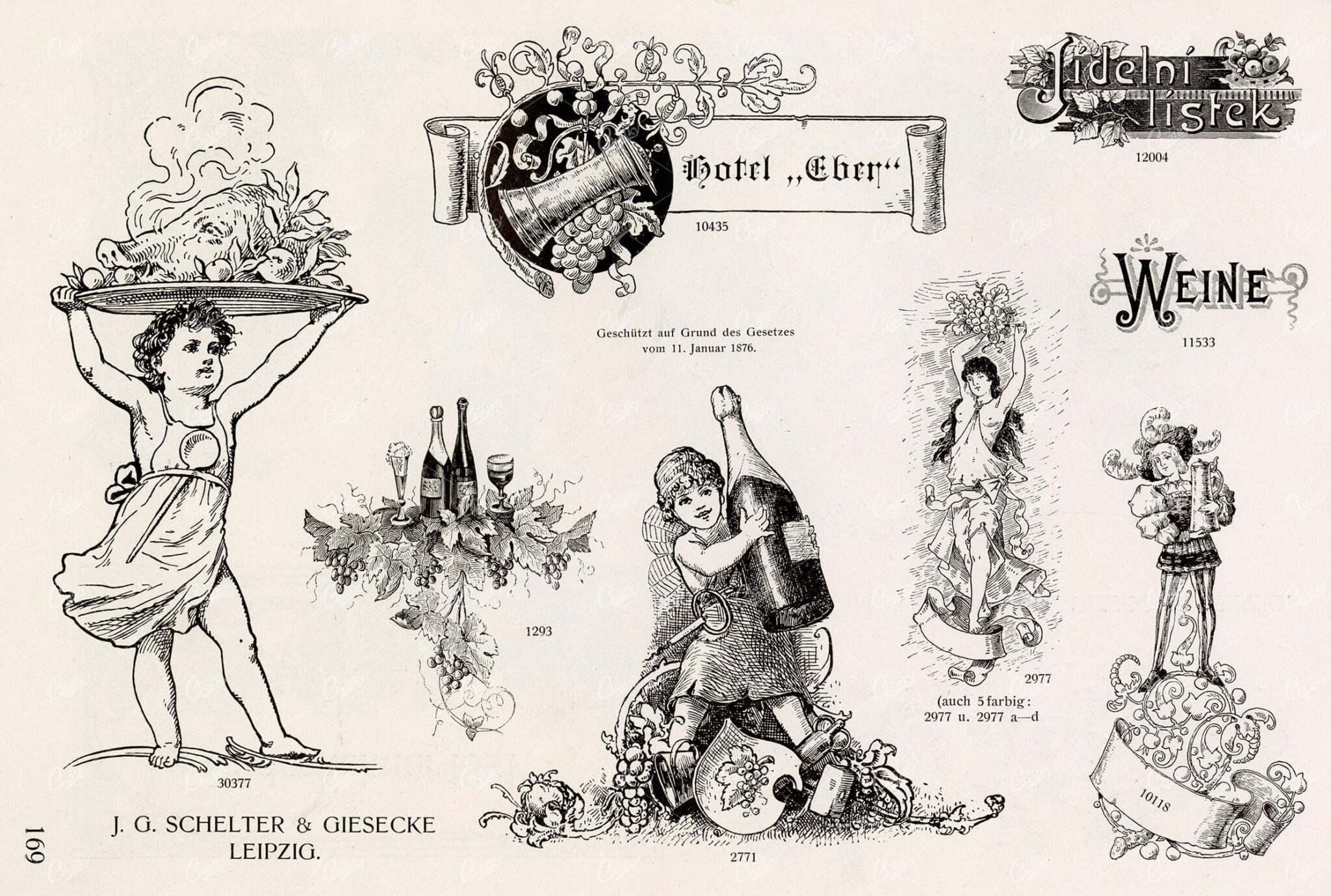

MISCELLANEOUS Selection of Vintage Design Elements – 1800s Antique Stock Artwork
The type foundry and print shop of old would create books, like the one this image was discovered within, to help customers and clients with their design choices. Naturally, these books were jam packed with useful illustrative elements that could be combined to create a final piece. Today, these books are extremely difficult to get a hold of. Especially those that were published in the late 1800s. They were not mainstream publications, they simply served as ‘catalogs’ and thus were only produced in small numbers. Fortunately, we were introduced to a collector who had precisely what we had been searching for for so long. After some costly negotiations, we’re very excited to be able to share the wonderful gems within.
- License Info
- Resolution: 8048 x 5565
- Year of Print: Late 1800s
- Artist: Schelter & Giesecke Type Foundry
From this collection
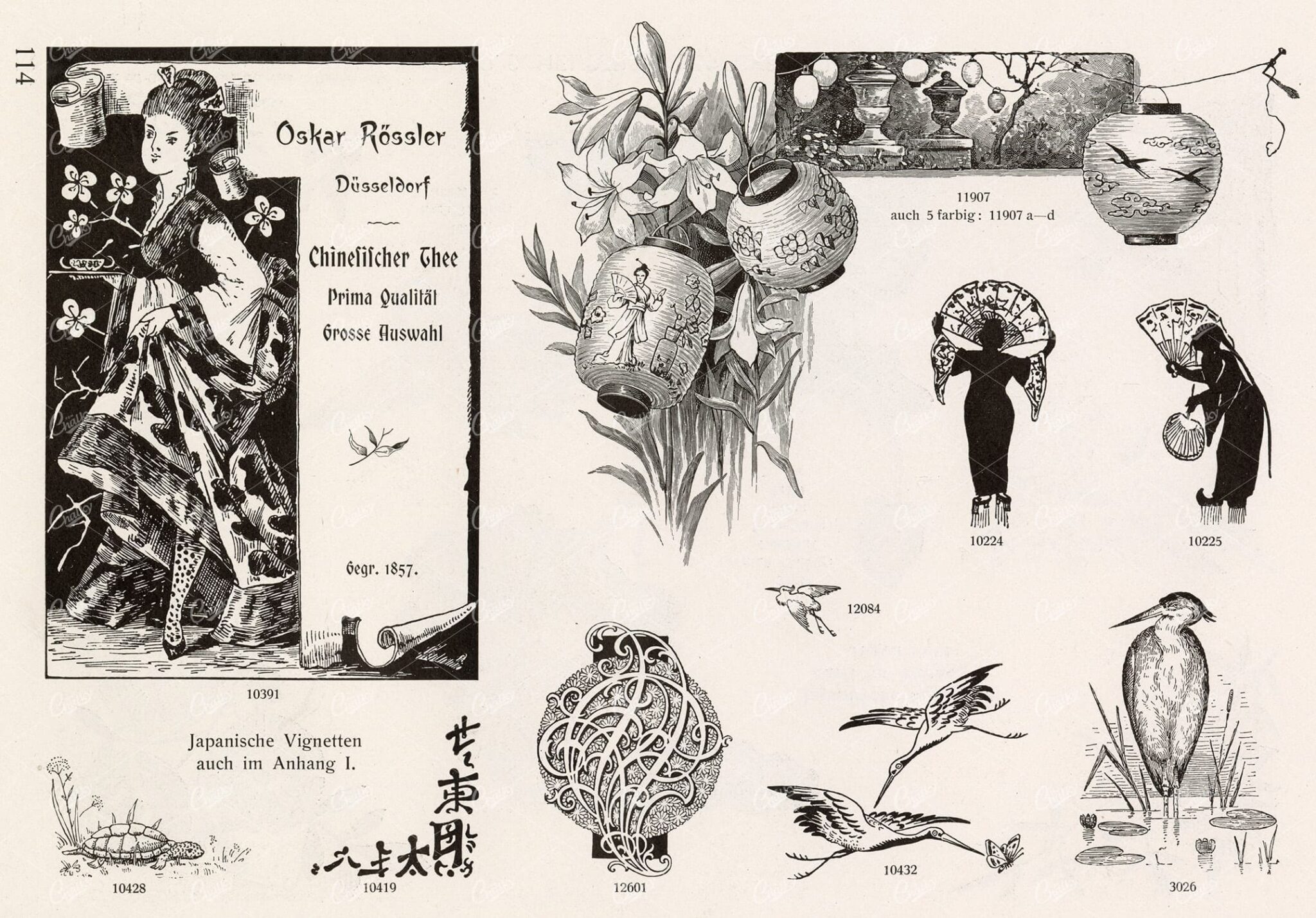

VINTAGE Decorative Design Elements – Ornate Japanese Antique Artwork
The type foundry and print shop of old would create books, like the one this image was discovered within, to help customers and clients with their design choices. Naturally, these books were jam packed with useful illustrative elements that could be combined to create a final piece. Today, these books are extremely difficult to get a hold of. Especially those that were published in the late 1800s. They were not mainstream publications, they simply served as ‘catalogs’ and thus were only produced in small numbers. Fortunately, we were introduced to a collector who had precisely what we had been searching for for so long. After some costly negotiations, we’re very excited to be able to share the wonderful gems within.
- License Info
- Resolution: 7619 x 5377
- Year of Print: Late 1800s
- Artist: Schelter & Giesecke Type Foundry
From this collection
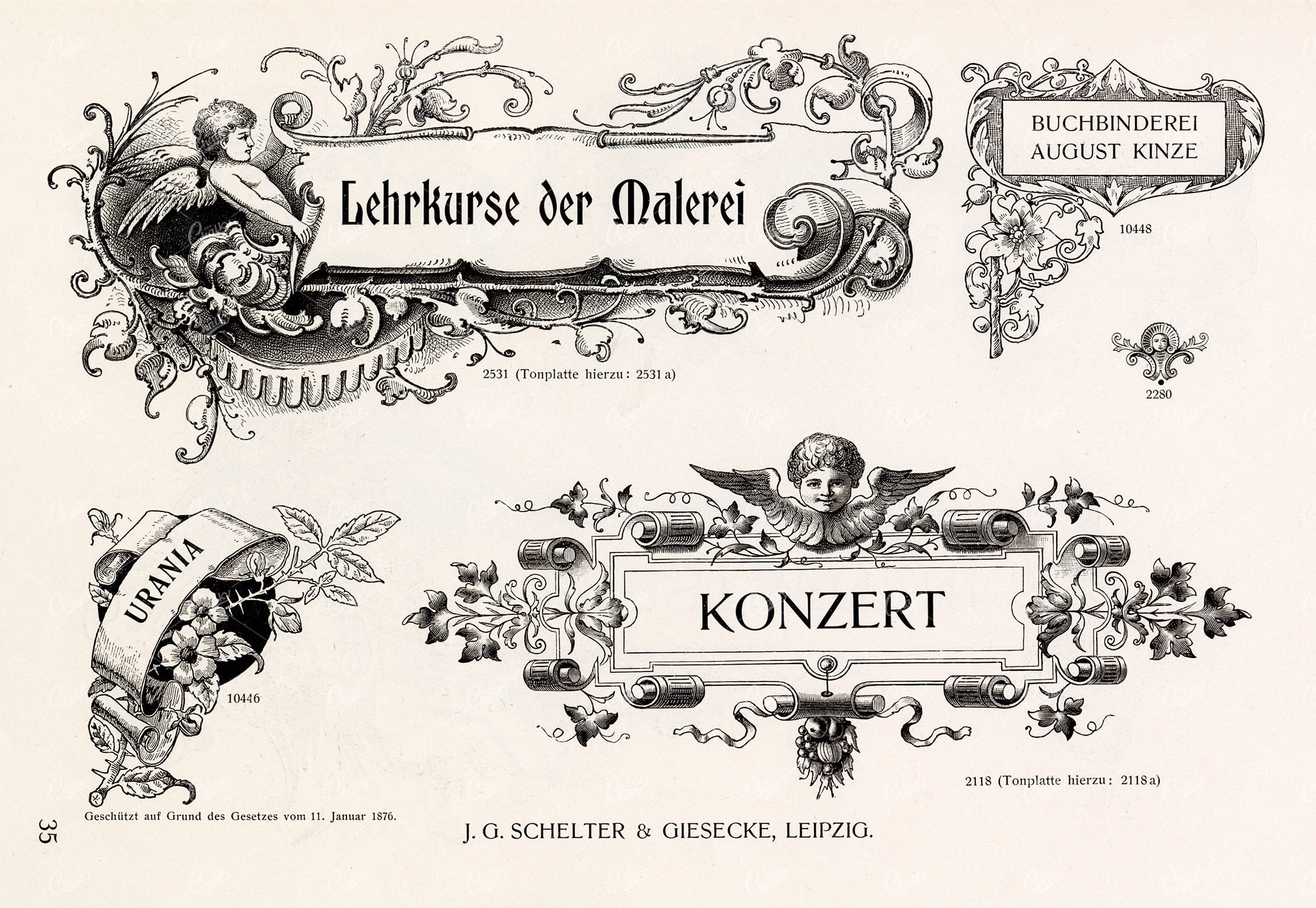

VINTAGE Decorative Design Elements – Ribbons and Banners for Type
The type foundry and print shop of old would create books, like the one this image was discovered within, to help customers and clients with their design choices. Naturally, these books were jam packed with useful illustrative elements that could be combined to create a final piece. Today, these books are extremely difficult to get a hold of. Especially those that were published in the late 1800s. They were not mainstream publications, they simply served as ‘catalogs’ and thus were only produced in small numbers. Fortunately, we were introduced to a collector who had precisely what we had been searching for for so long. After some costly negotiations, we’re very excited to be able to share the wonderful gems within.
- License Info
- Resolution: 8059 x 5577
- Year of Print: Late 1800s
- Artist: Schelter & Giesecke Type Foundry
From this collection
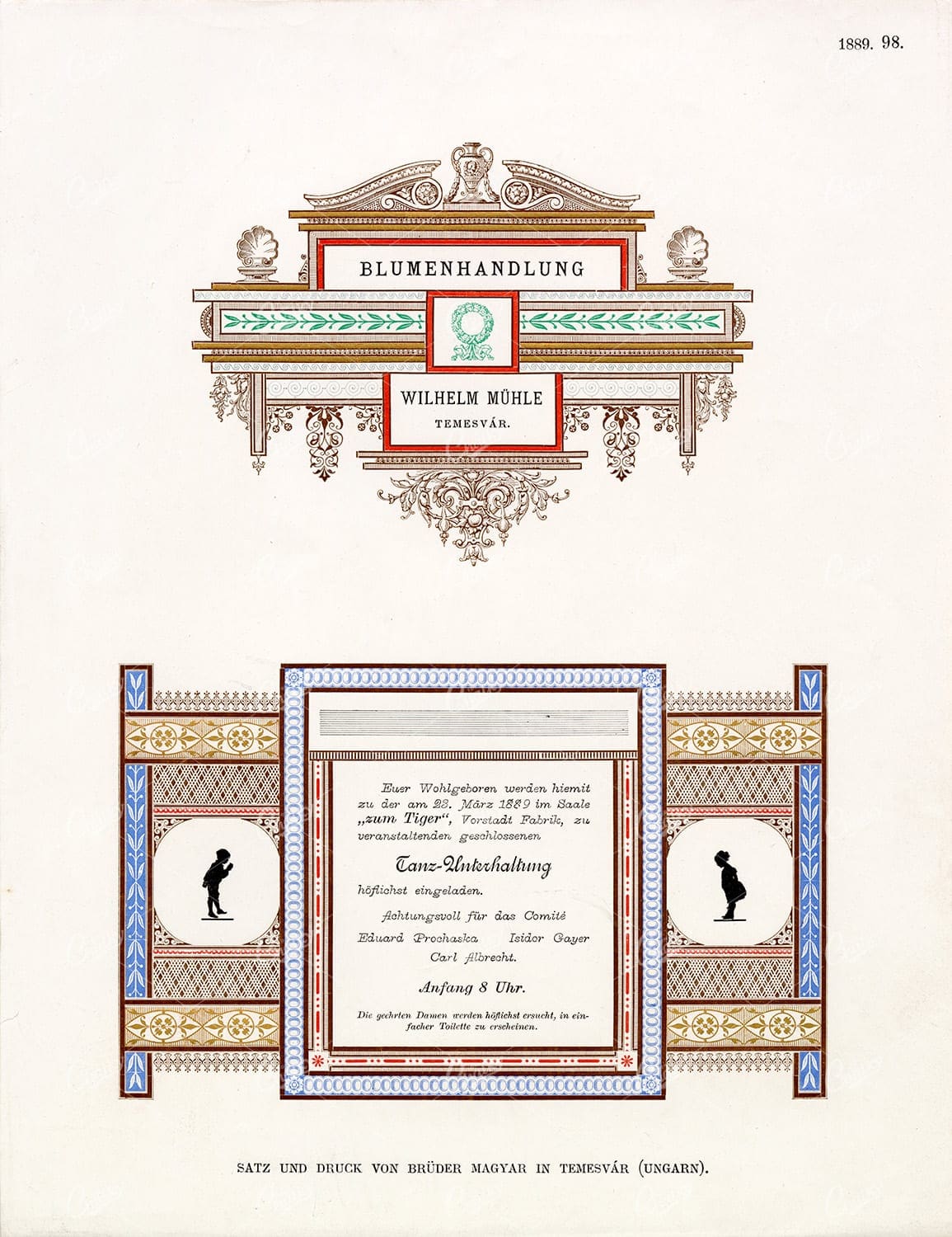

ORNAMENTAL 1889 Print Sample – Beautiful Pattern Exchange Design
This stunning 19th-century graphic pattern sample was discovered within the ‘Internationaler Graphischer Muster-Austausch des deutschen Buchdrucker-Vereins’ which translates to ‘International graphic pattern exchange of the German book printer association’. Inside was a plethora of gorgeous examples of typography, layout design, printing techniques, and more. A fine display of some of the very best from the print industry of the time and a fantastic source for the modern creator and enthusiast.
The demand for beautifully designed printed material spiked during the latter part of the 19th century and with new technical possibilities, demands became more elaborate. To keep up with the times, the best printing companies in Europe and the United States exchanged their finest creations in an attempt to push the industry to new heights. The technologies that would make a faithful reproduction of originals in print possible were still not invented, or deficient. Therefore, professional stakeholders had to exchange their original works among themselves.
- License Info
- Resolution: 7868 x 10214
- Year of Print: 1890
- Artist: Print Association
From this collection
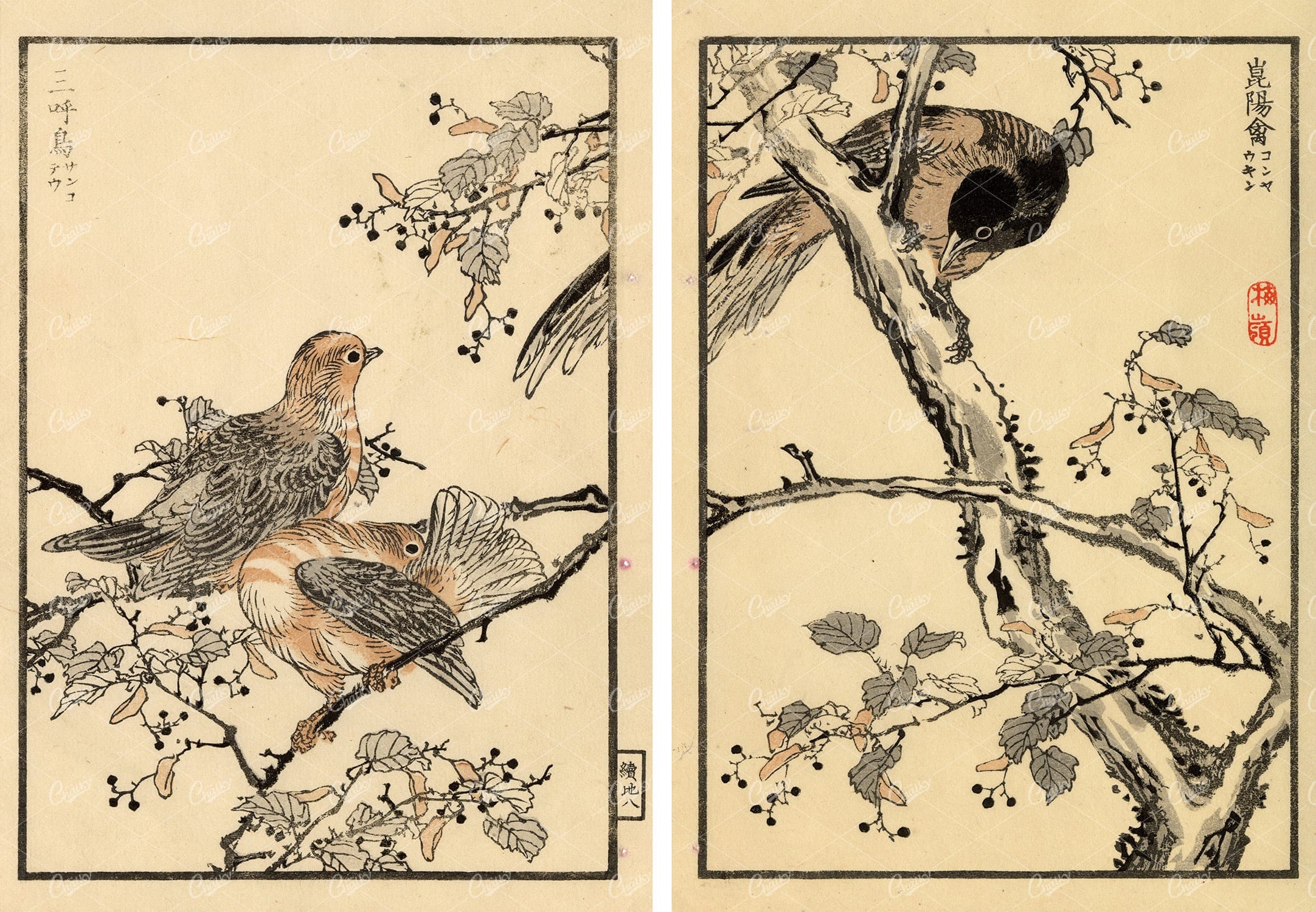

ANTIQUE Original Kono Bairei Woodblock Japanese Prints 1881 Birds in Tree
You’re looking at a beautiful piece of Japanese woodblock art from our collection of original 1881 prints by noted artist, Kono Bairei; Created for one of his best-known publications ‘one hundred birds’. Most of the bird species throughout this collection were native to Japan, with a few domesticated and some imported cage birds. Bairei was born and lived in Kyoto. He was apprenticed to the Maruyama printer Nakajima Raiso at the age of eight. He was a pupil of Shijo artist Shiokawa Bunrin and followed the Nanga school tradition. He established the Kyoto Prefectural School of Painting before opening his own studio to students and retiring from teaching.
- License Info
- Resolution: 11582 x 8028
- Year of Print: 1881
- Artist: Kono Bairei
From this collection
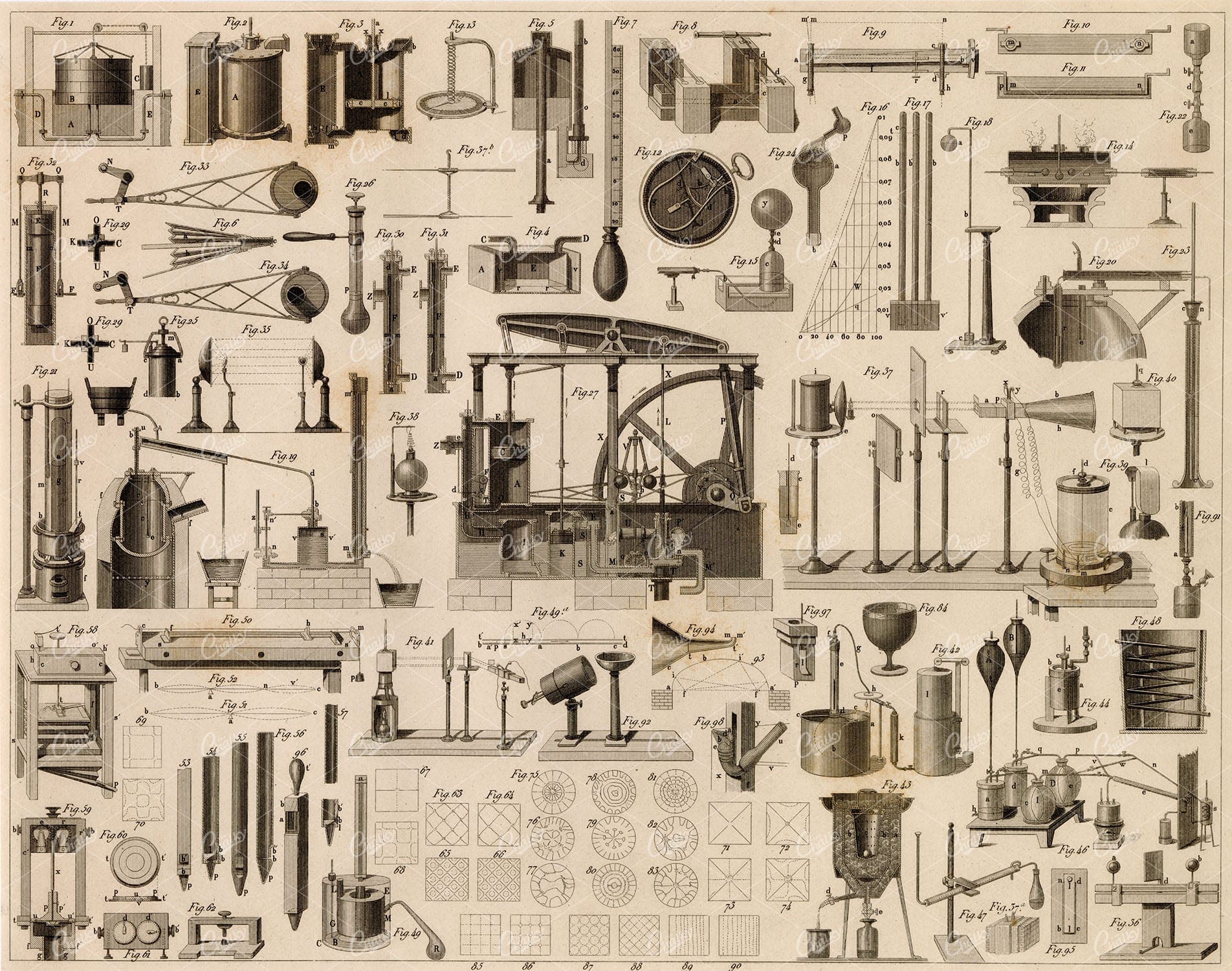

PHYSICS – Steam Engine, Thermometer, Gasometer – Antique 1851 Print
You’re looking at a well preserved original plate from Johann Georg Heck’s “Iconographic Encyclopedia of Sciences, Literature and Art” published in 1851 by Rudolphe Garrigue in New York. We were extremely fortunate to acquire the full collection of illustrative prints from the series, which after many months of looking, proved to be very difficult!
- License Info
- Resolution: 9149 x 7207 300dpi
- Year of Print: 1851
- Artist: Johann Georg Heck
From this collection
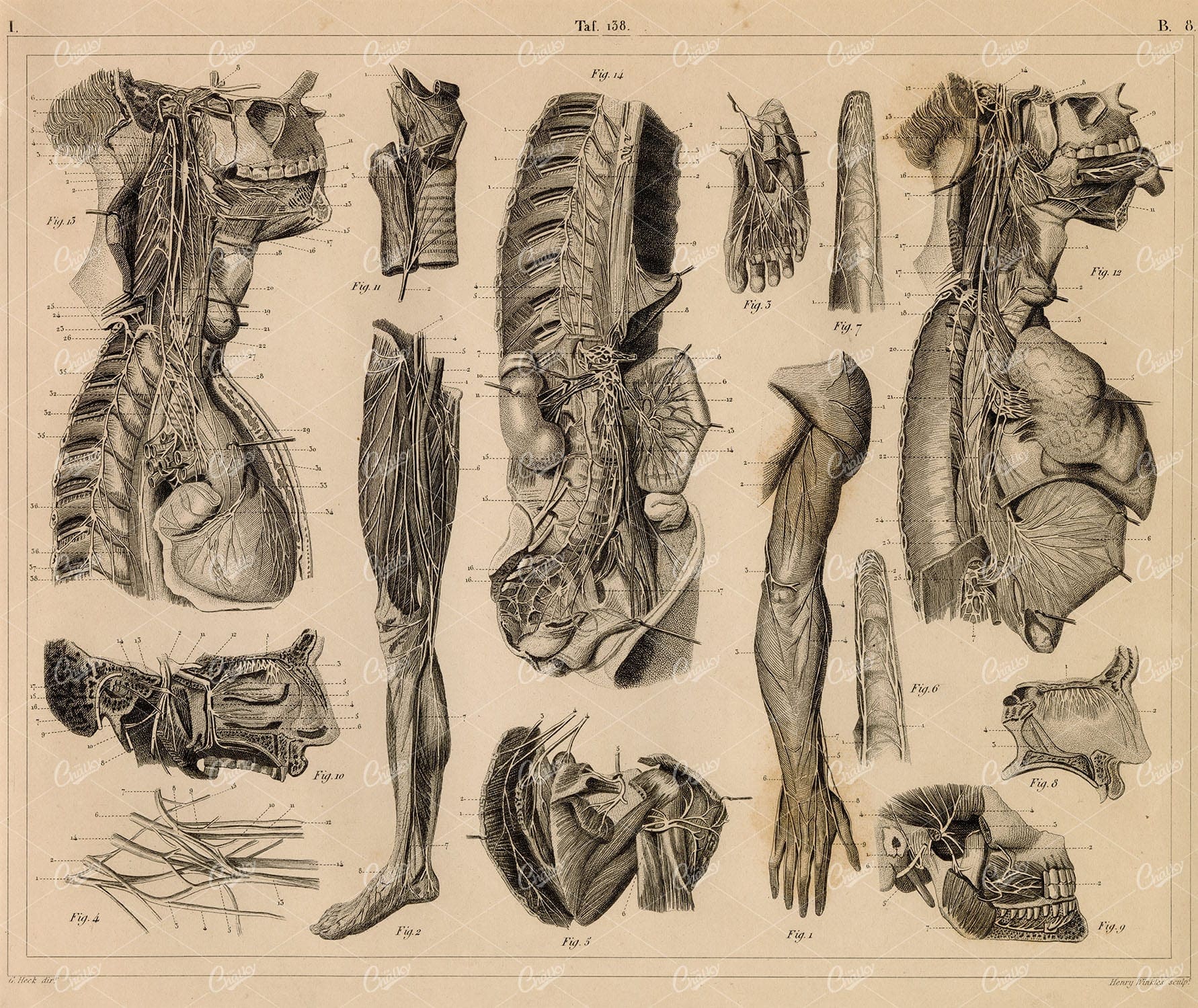

ANTHROPOLOGY – Anatomy of the Nerves – Antique 1851 Print
You’re looking at a well preserved original plate from Johann Georg Heck’s “Iconographic Encyclopedia of Sciences, Literature and Art” published in 1851 by Rudolphe Garrigue in New York. We were extremely fortunate to acquire the full collection of illustrative prints from the series, which after many months of looking, proved to be very difficult!
- License Info
- Resolution: 9362 x 7881 300dpi
- Year of Print: 1851
- Artist: Johann Georg Heck
From this collection
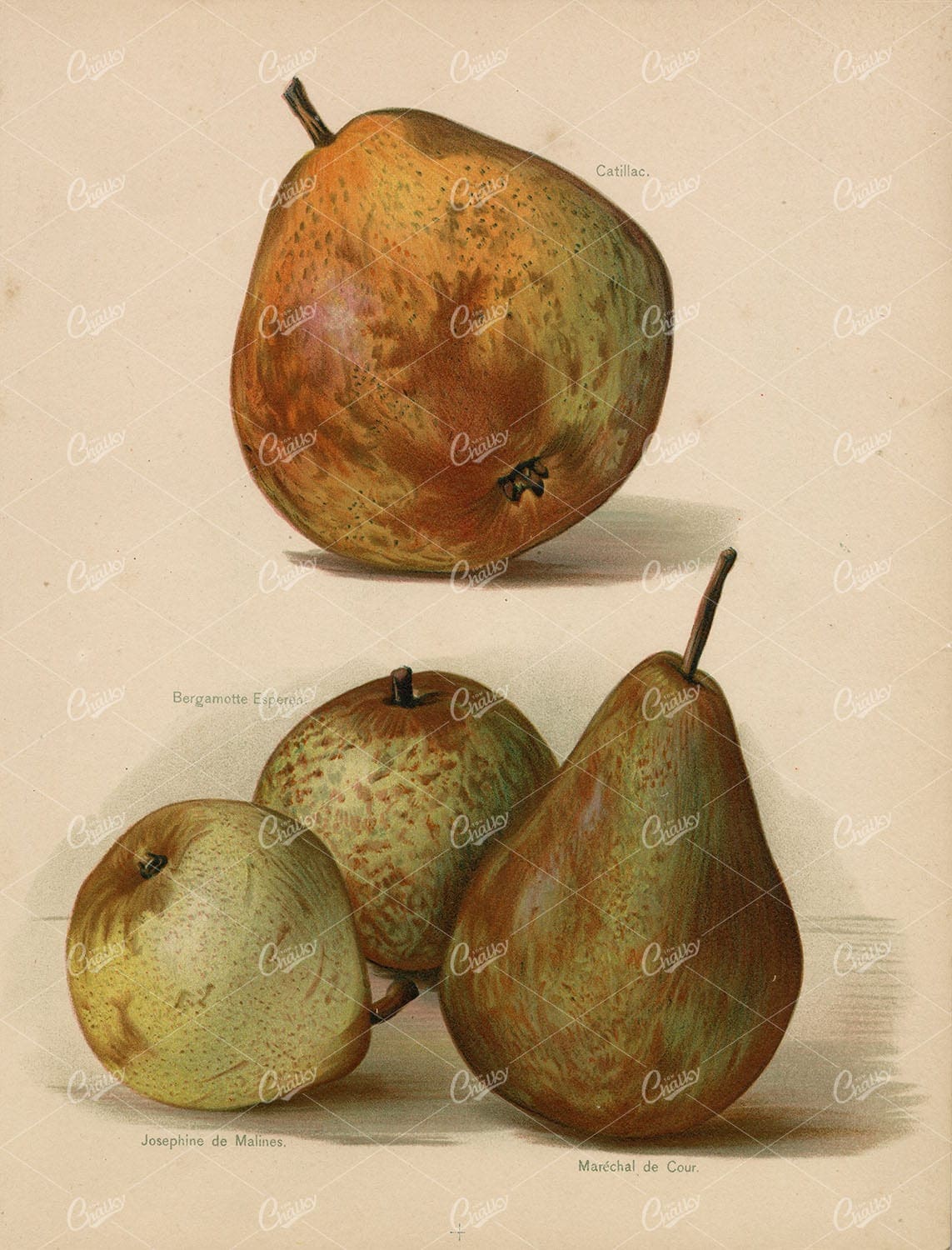

BOTANICAL Antique Original Print – Garden Fruits – Pears Victorian Art
You’re looking at an original, beautifully coloured chromolithograph print from ‘The Fruit Grower’s Guide’ by John Wright May Rivers, published by H. Virtue & Company in 1890.
- License Info
- Resolution: 7300 x 9700 300dpi
- Year of Print: 1890
- Artist: John Wright May Rivers
Related Images


LOCOMOTIVE Vintage 1880 Train Artwork. William Mackenzie Plate 5
An original Antique Plate scan from the National Encyclopaedia: A Dictionary of Universal Knowledge. Published by William Mackenzie in 1880. Click on the Artist’s name to see the full collection from this series!
- License Info
- Resolution: 7594 x 10009 300dpi
- Year of Print: 1880
- Artist: William Mackenzie
From this collection
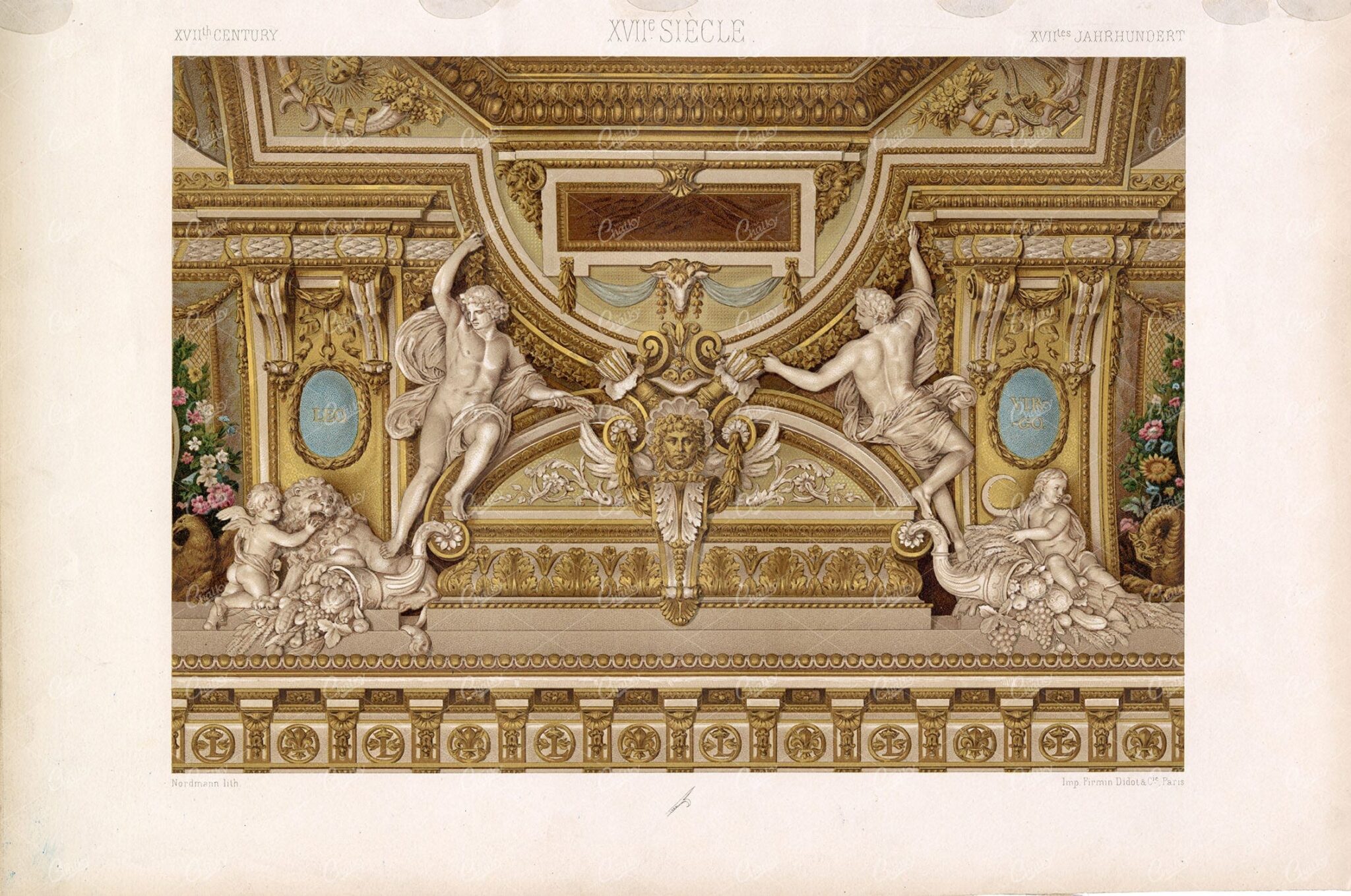

17TH CENUTY Ornamental Architecture Design RACINET Nordmann Lith
Here we have an original vintage print from the Auguste Racinet L’ornement Polycrome (1870) series. One of the finest collections of decorative arts from the 19th century, refered to for inspiration by many modern creators. Many interesting and useful design elements are waiting to be explored in this one piece! The purpose of the fantastic reproductions in L’Ornement polychrome were to inspire an improvement of the decorative arts of its time.
- License Info
- Resolution: 18575 x 12330 300dpi
- Year of Print: Estimated 1873
- Artist: Auguste Racinet
From this collection
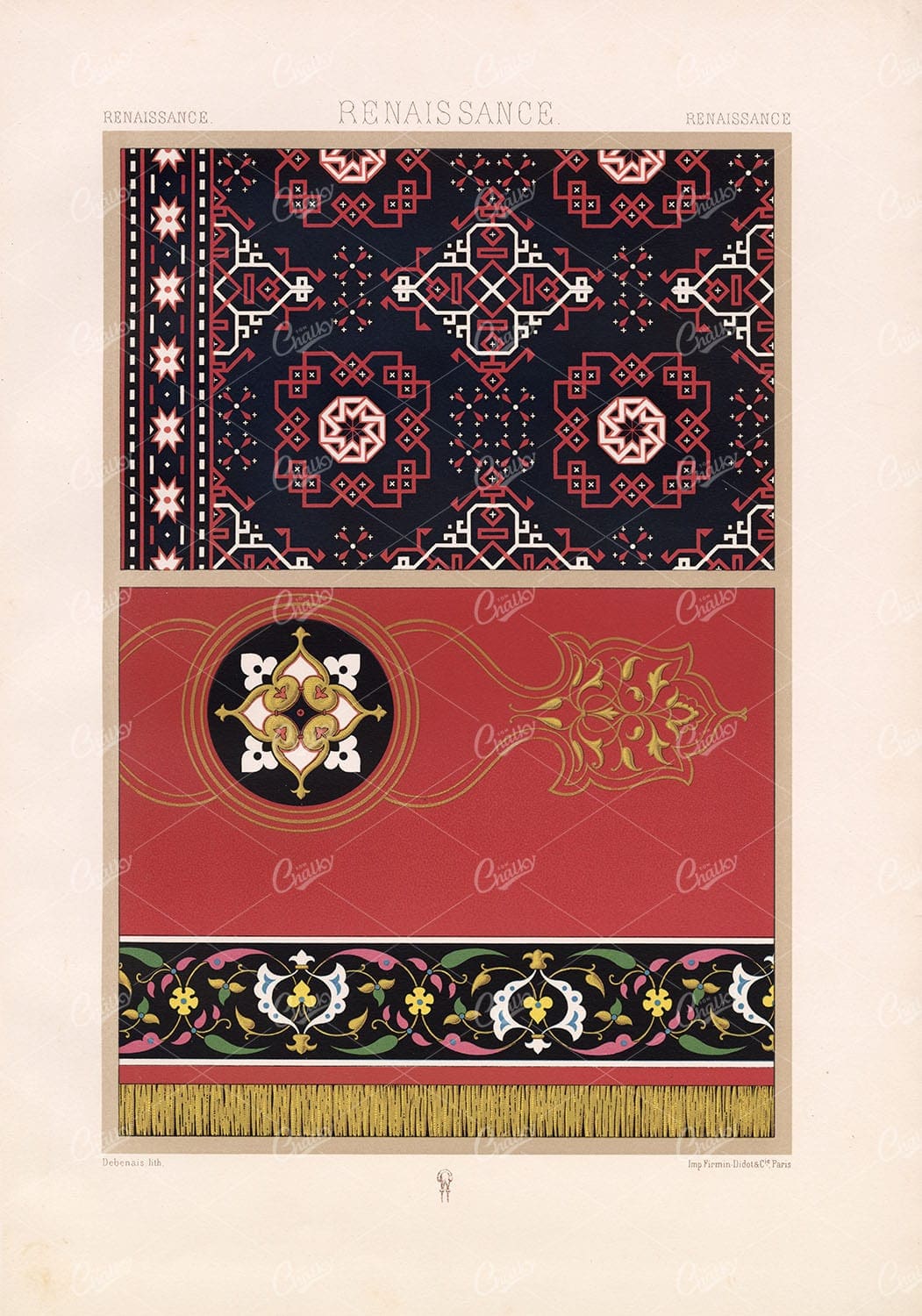

RENAISSANCE Rug Pattern Fabric Design RACINET – Vintage Illustration
Here we have an original vintage print from the Auguste Racinet L’ornement Polycrome (1870) series. One of the finest collections of decorative arts from the 19th century, refered to for inspiration by many modern creators. Many interesting and useful design elements are waiting to be explored in this one piece! The purpose of the fantastic reproductions in L’Ornement polychrome were to inspire an improvement of the decorative arts of its time.
- License Info
- Resolution: 12433 x 17740 300dpi
- Year of Print: Estimated 1873
- Artist: Auguste Racinet
From this collection


ANTIQUE Oken’s Naturgeschichte Print – Various Coral Species
Original Colour Vintage Print from Lorenz Okenfuss’ ‘Oken’s Naturgeschichte’ (Allgemeine Naturgeschichte für alle Stände), with illustrations by Johann Susemihl (1767-1847), and published in Stuttgart by Hoffman between 1839 and 1841. Lorenz Oken (1 August 1779 – 11 August 1851) was a German naturalist, botanist, biologist, and ornithologist. Oken was born Lorenz Okenfuss (German: Okenfuß) in Bohlsbach (now part of Offenburg), Ortenau, Baden, and studied natural history and medicine at the universities of Freiburg and Würzburg. He went on to the University of Göttingen, where he became a Privatdozent (unsalaried lecturer), and shortened his name to Oken. As Lorenz Oken, he published a small work entitled Grundriss der Naturphilosophie, der Theorie der Sinne, mit der darauf gegründeten Classification der Thiere (1802). This was the first of a series of works which established him as a leader of the movement of “Naturphilosophie” in Germany.
- License Info
- Resolution: 9500 x 11500 300dpi
- Year of Print: 1836
- Artist: Lorenz Oken
- Image Type(s): JPG
From this collection
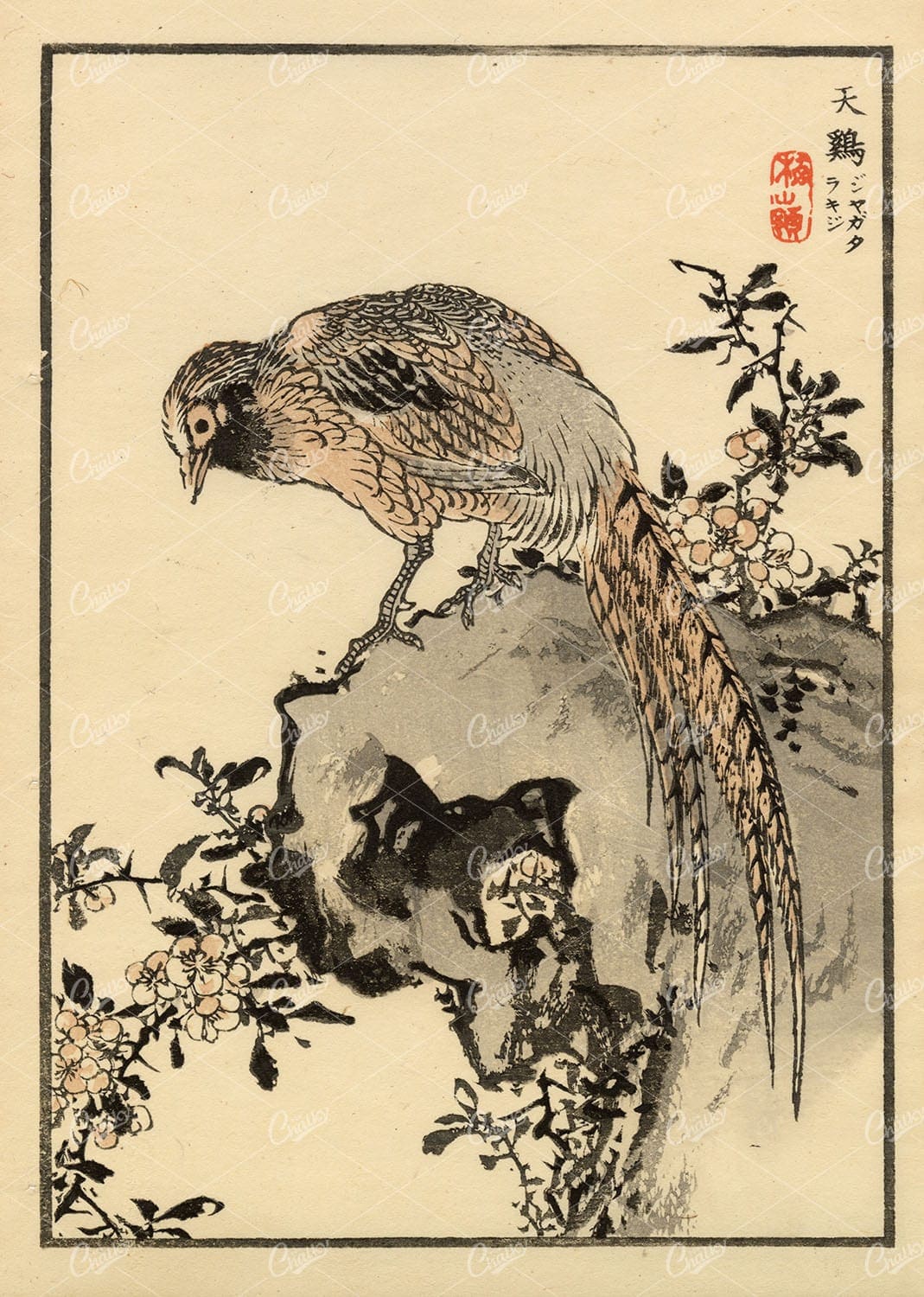

ANTIQUE Original Kono Bairei Woodblock Japanese Print 1881 Bird on Rock
You’re looking at a beautiful piece of Japanese woodblock art from our collection of original 1881 prints by noted artist, Kono Bairei; Created for one of his best-known publications ‘one hundred birds’. Most of the bird species throughout this collection were native to Japan, with a few domesticated and some imported cage birds. Bairei was born and lived in Kyoto. He was apprenticed to the Maruyama printer Nakajima Raiso at the age of eight. He was a pupil of Shijo artist Shiokawa Bunrin and followed the Nanga school tradition. He established the Kyoto Prefectural School of Painting before opening his own studio to students and retiring from teaching.
- License Info
- Resolution: 5661 x 7946 300dpi
- Year of Print: 1881
- Artist: Kono Bairei
From this collection
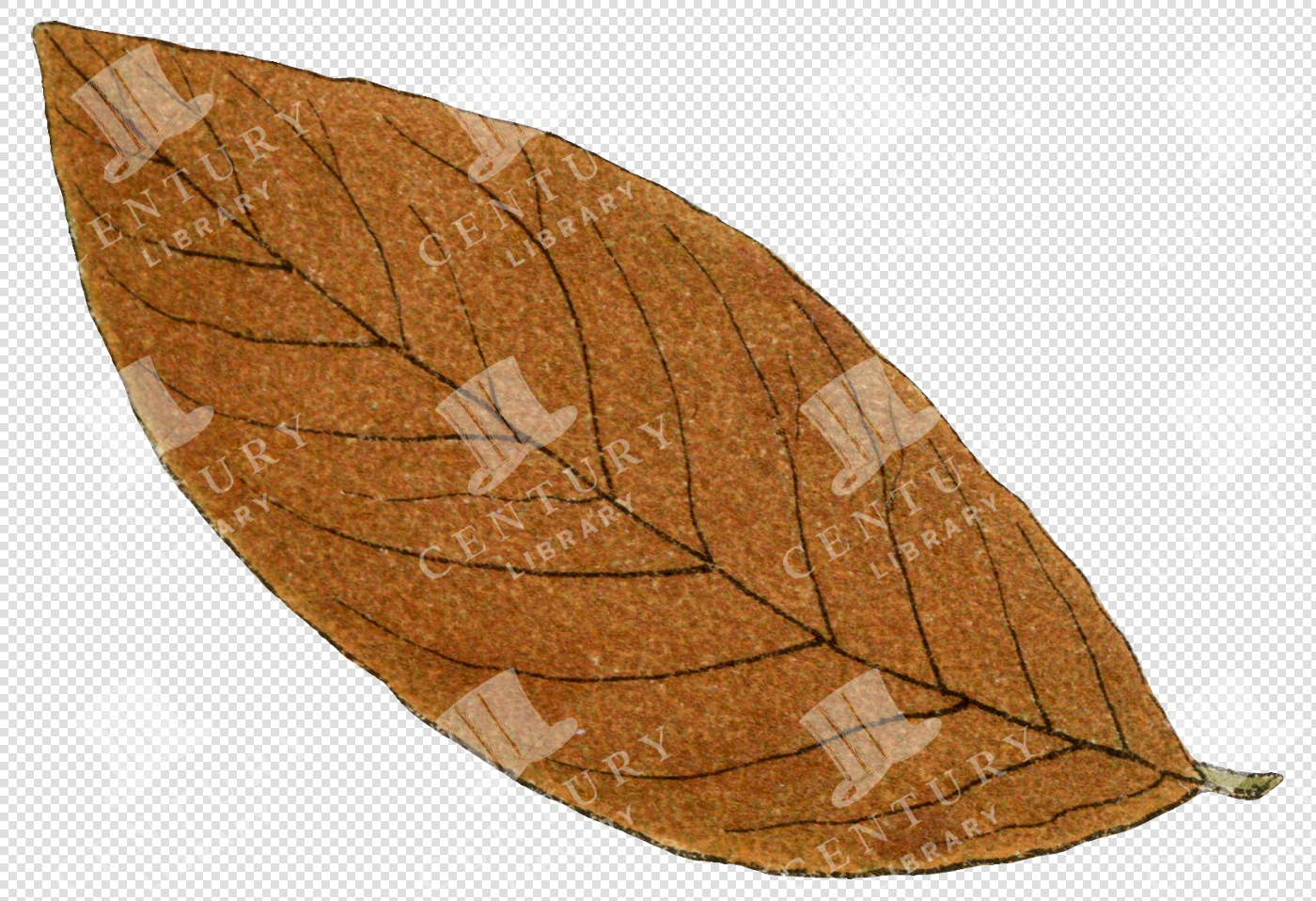

Elongated Brown Autumn Leaf with Detailed Veins and Pointed Tip
This image is part of our exquisite collection of vintage autumn leaf illustrations, meticulously revived from antique treasures. Each leaf comes as a high-resolution, transparent PNG file, perfect for graphic designers, illustrators, and creative hobbyists alike.
Use these botanical clipart pieces to elevate your projects, whether it’s for invitations, decor, branding, or packaging. Infuse your designs with the graceful charm of nature using these timeless, printable leaf graphics.
- Image Type(s): PNG
From this collection
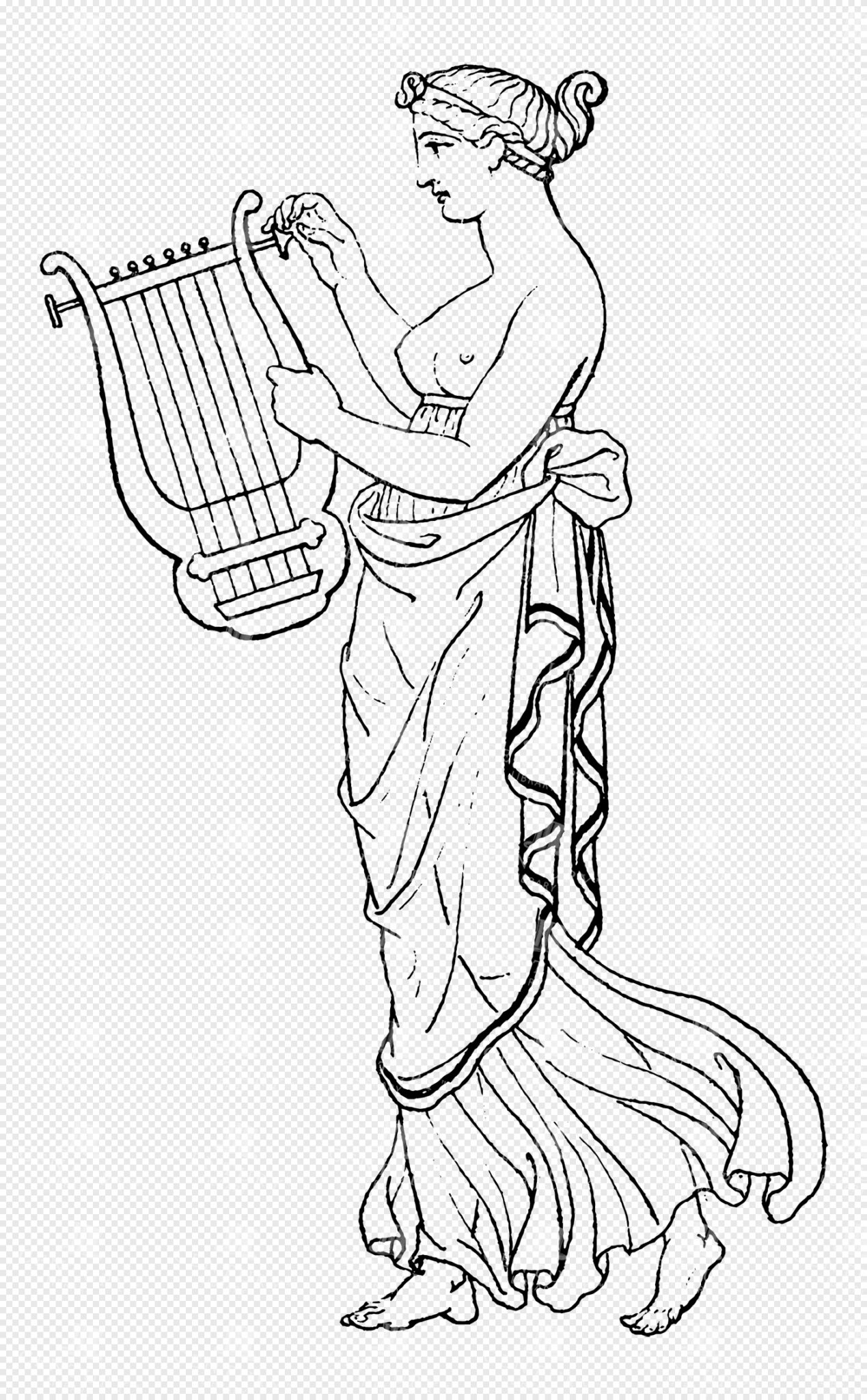

Greek Muse Playing Lyre in Flowing Draped Garment with Grace
This image is part of our Extensive Collection of 135 Greek, Roman, and Mythology Vintage Line Art Illustrations. Each piece hand-selected from a variety of 19th-century books and ephemera found within our private library.
- Image Type(s): PNG
From this collection
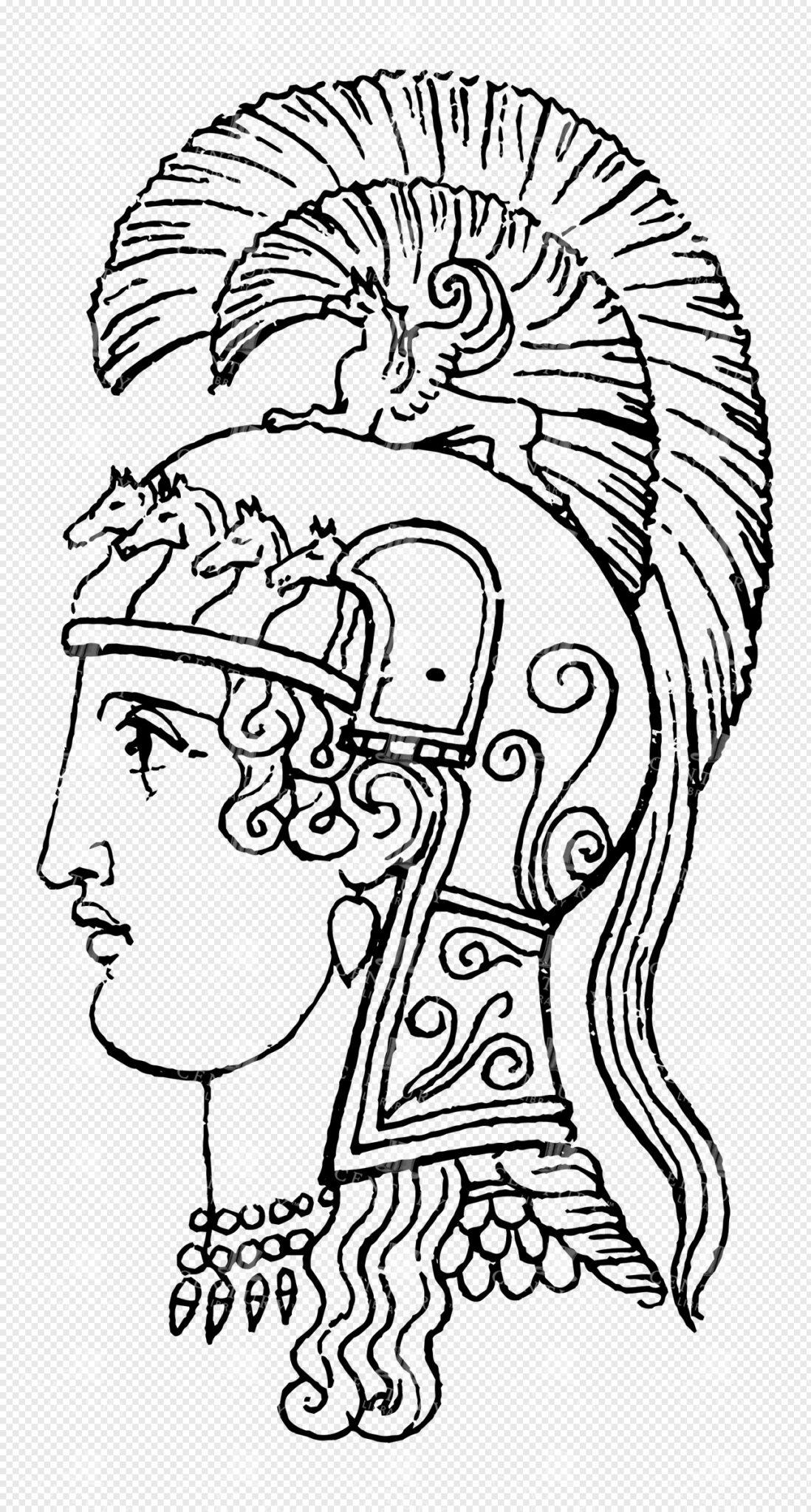

Greek Warrior with Crested Helmet, Mythical Motifs, and Flowing Curly Hair
This image is part of our Extensive Collection of 135 Greek, Roman, and Mythology Vintage Line Art Illustrations. Each piece hand-selected from a variety of 19th-century books and ephemera found within our private library.
- Image Type(s): PNG
From this collection
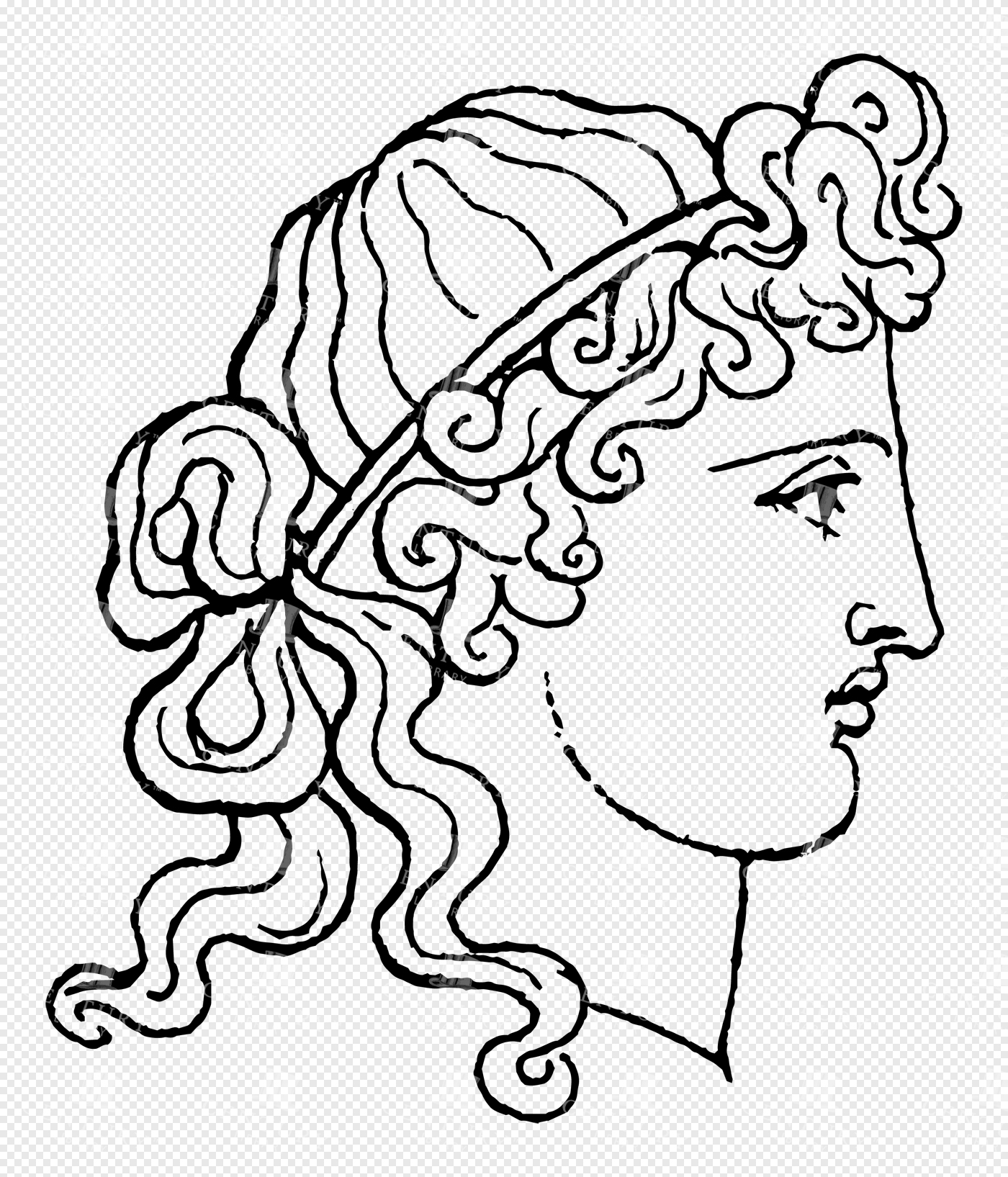

Young Greek God in Profile with Flowing Curly Hair and Headband
This image is part of our Extensive Collection of 135 Greek, Roman, and Mythology Vintage Line Art Illustrations. Each piece hand-selected from a variety of 19th-century books and ephemera found within our private library.
- Image Type(s): PNG
From this collection
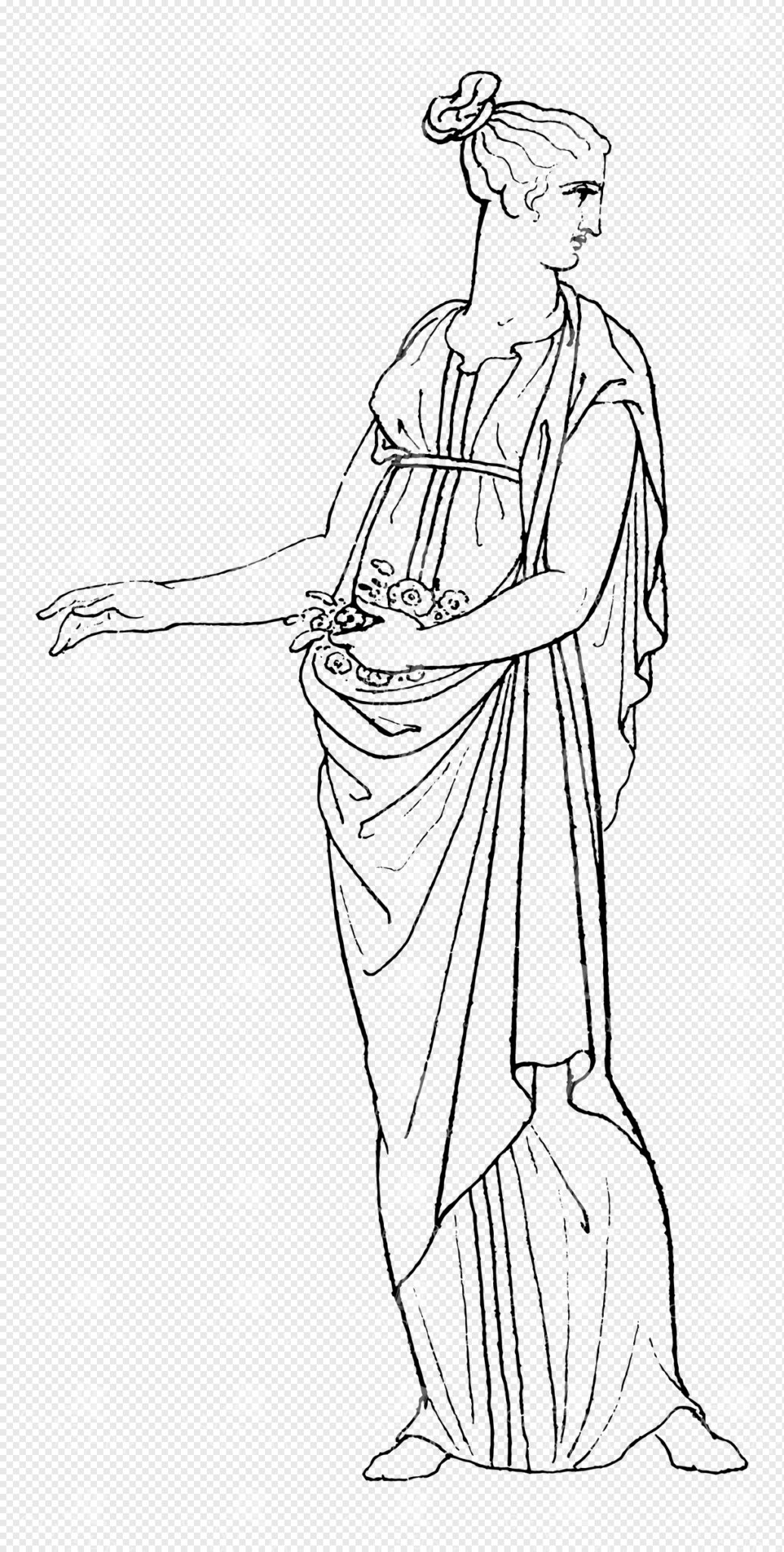

Flora Holding Flowers in Flowing Greek Garments with Graceful Stance and Elegant Pose
This image is part of our Extensive Collection of 135 Greek, Roman, and Mythology Vintage Line Art Illustrations. Each piece hand-selected from a variety of 19th-century books and ephemera found within our private library.
- Image Type(s): PNG
From this collection
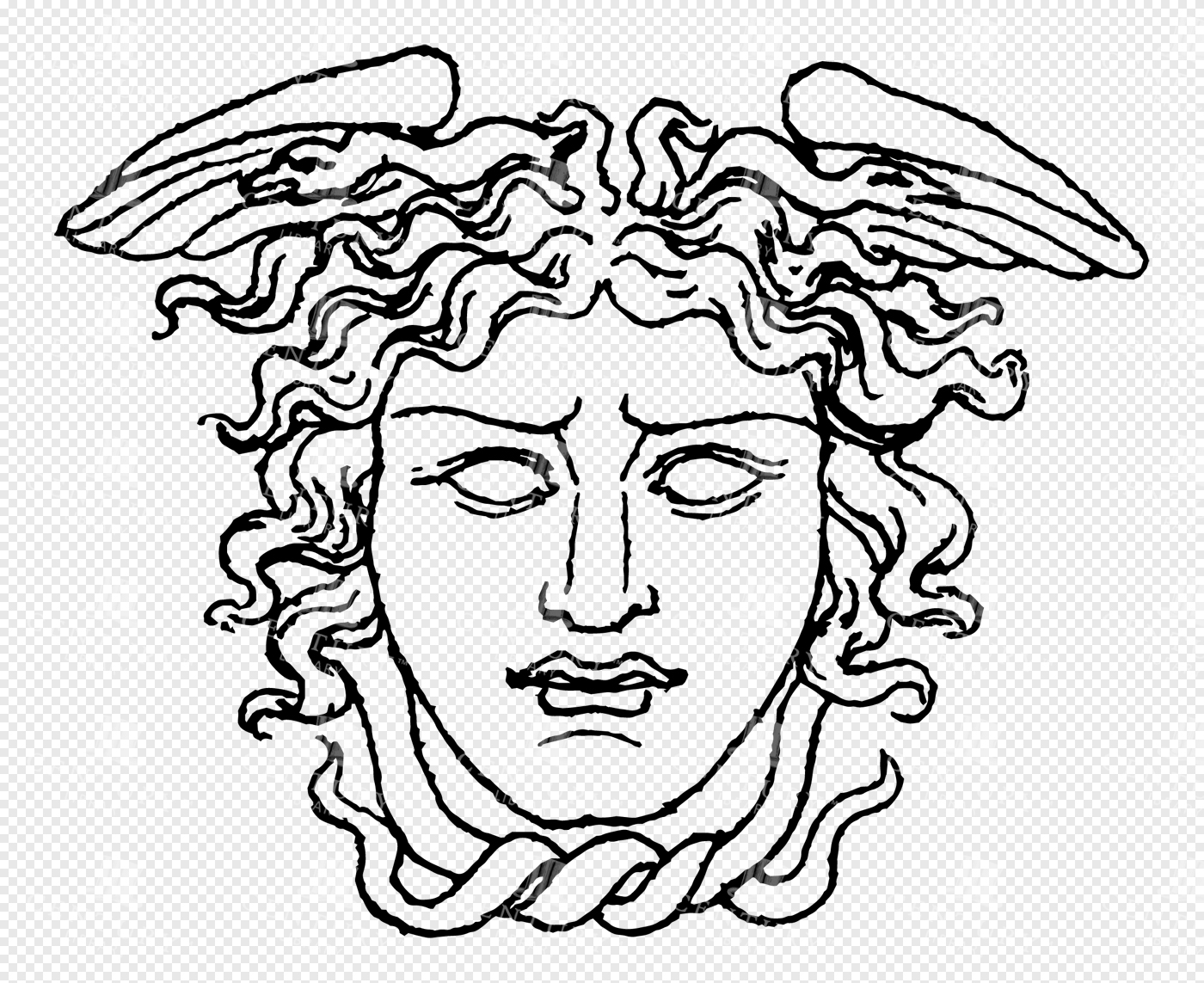

Gorgoneion Greek Mythology Lineart with Wavy Hair and Fierce Expression
This image is part of our Extensive Collection of 135 Greek, Roman, and Mythology Vintage Line Art Illustrations. Each piece hand-selected from a variety of 19th-century books and ephemera found within our private library.
- Image Type(s): PNG
From this collection
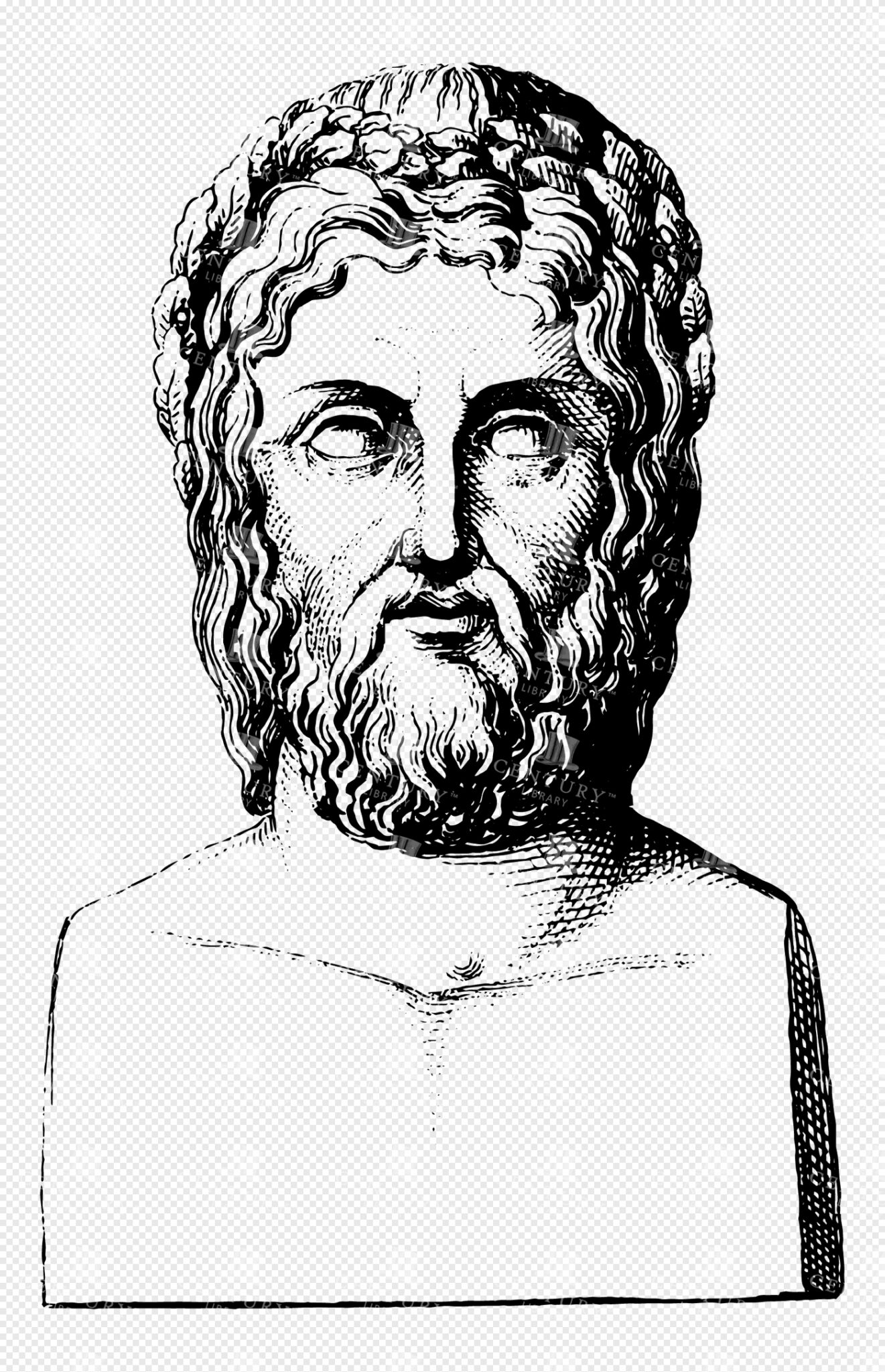

Zeus Bust in Greek Mythology with Flowing Beard and Laurel Wreath in Classical Line Art
This image is part of our Extensive Collection of 135 Greek, Roman, and Mythology Vintage Line Art Illustrations. Each piece hand-selected from a variety of 19th-century books and ephemera found within our private library.
- Image Type(s): PNG
From this collection


Seated Goddess Aphrodite in Classical Greek Lineart with Flowing Drapery and Elegant Pose
This image is part of our Extensive Collection of 135 Greek, Roman, and Mythology Vintage Line Art Illustrations. Each piece hand-selected from a variety of 19th-century books and ephemera found within our private library.
- Image Type(s): PNG
From this collection
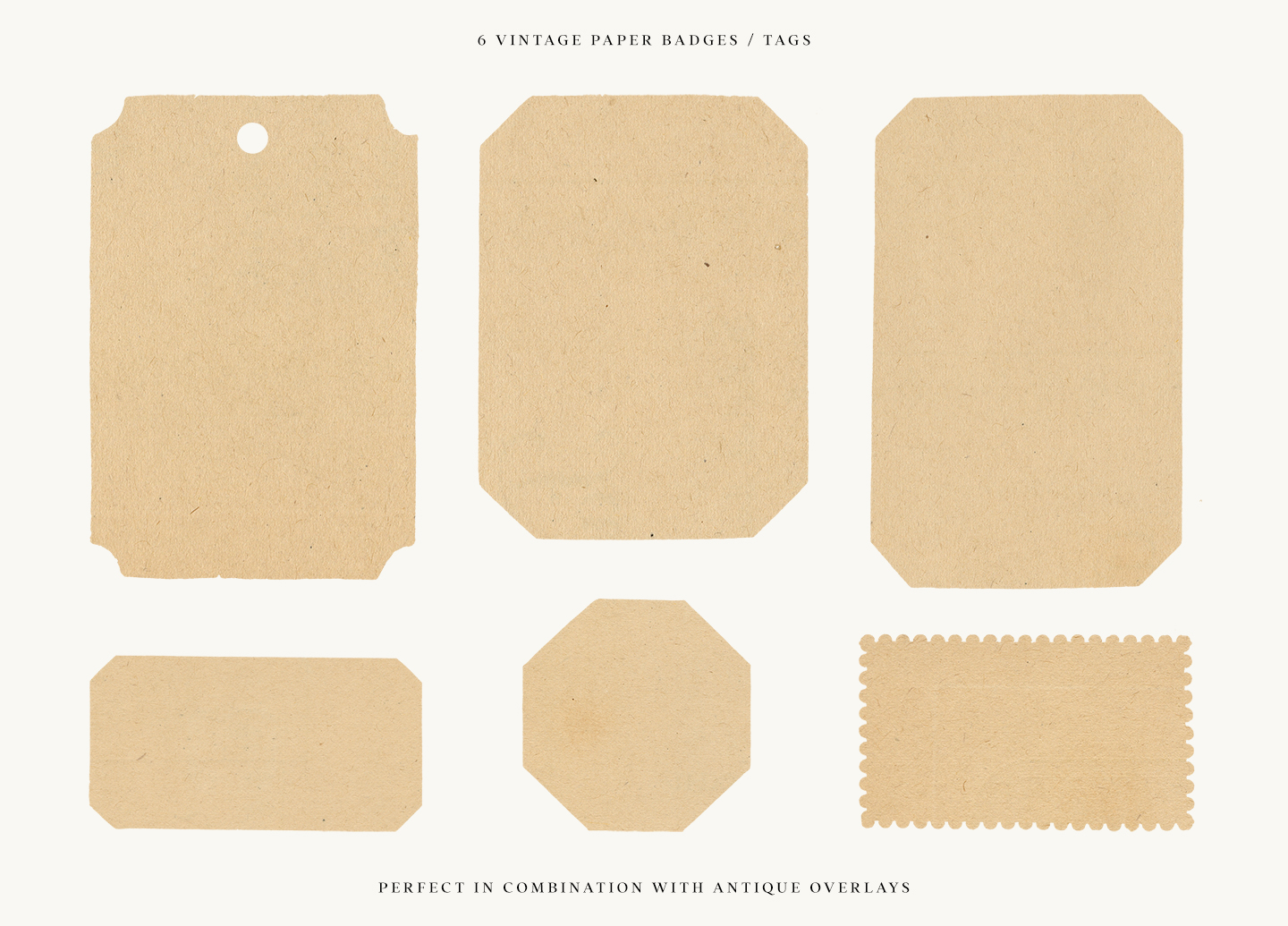

6 Vintage-Style Paper Badges and Tags for Crafts & DIY Projects
A set of six vintage-inspired paper badges and tags, perfect for adding a nostalgic flair to your creative projects. Each piece features a neutral, rustic design that complements scrapbooking, gift-wrapping, journaling, and other DIY crafts.
- License Info
- Resolution: Mixed
- Image Type(s): .ZIP (Pngs)
Related Images


Vintage Illustration of a Plesiosaur Skeleton with Long Neck as Transparent PNG
A vintage illustration of a plesiosaur skeleton, featuring its distinctive long neck and detailed bones. This transparent PNG is perfect for paleontology and educational-themed projects, highlighting this prehistoric marine reptile.
- Resolution: 5573px x 1535px
- Image Type(s): PNG
From this collection
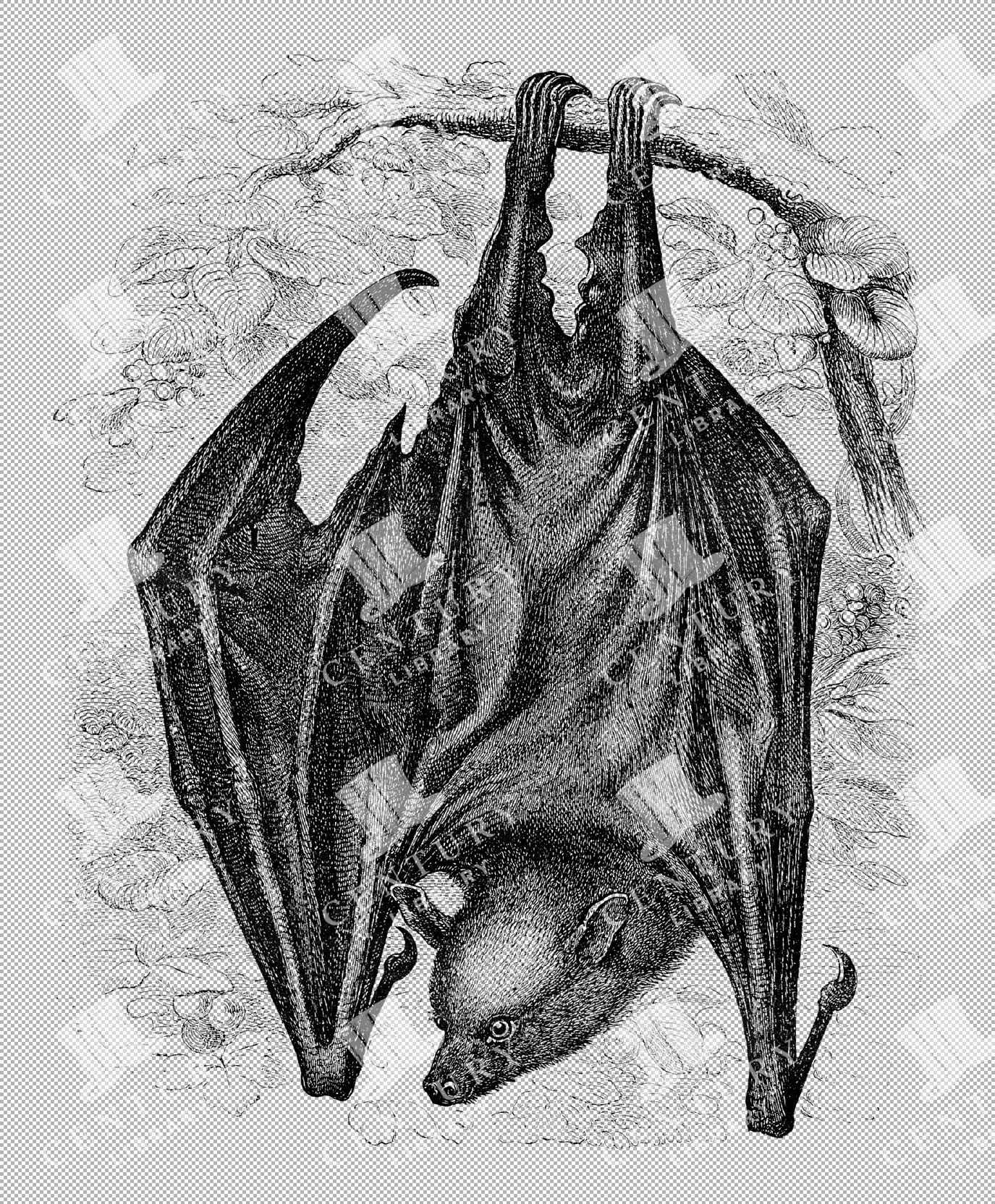

Flying Fox Bat Hanging – Transparent PNG
A realistic illustration of a flying fox bat hanging from a branch, with wings folded. The transparent PNG format makes this image ideal for projects focused on nocturnal wildlife and bats, emphasizing the bat’s unique anatomy and posture.
- Resolution: 3763px x 4554px
- Image Type(s): PNG
- Animal
- animalia
- Bat
- Branch
- chiroptera
- Claws
- creature
- dark
- Drawing
- Ears
- exotic
- Eyes
- Flying
- Fox
- fruit bat
- fur
- Hanging
- hanging upside
- illustration
- illustration PNG
- isolated
- large
- Mammal
- mega bat
- Nature
- Night
- nocturnal
- perched
- PNG
- rainforest
- representation
- resting
- Silhouette
- sketch
- transparent
- transparent background
- Tree
- tree branch
- Tropical
- Wild
- Wildlife
- Wings
Related Images
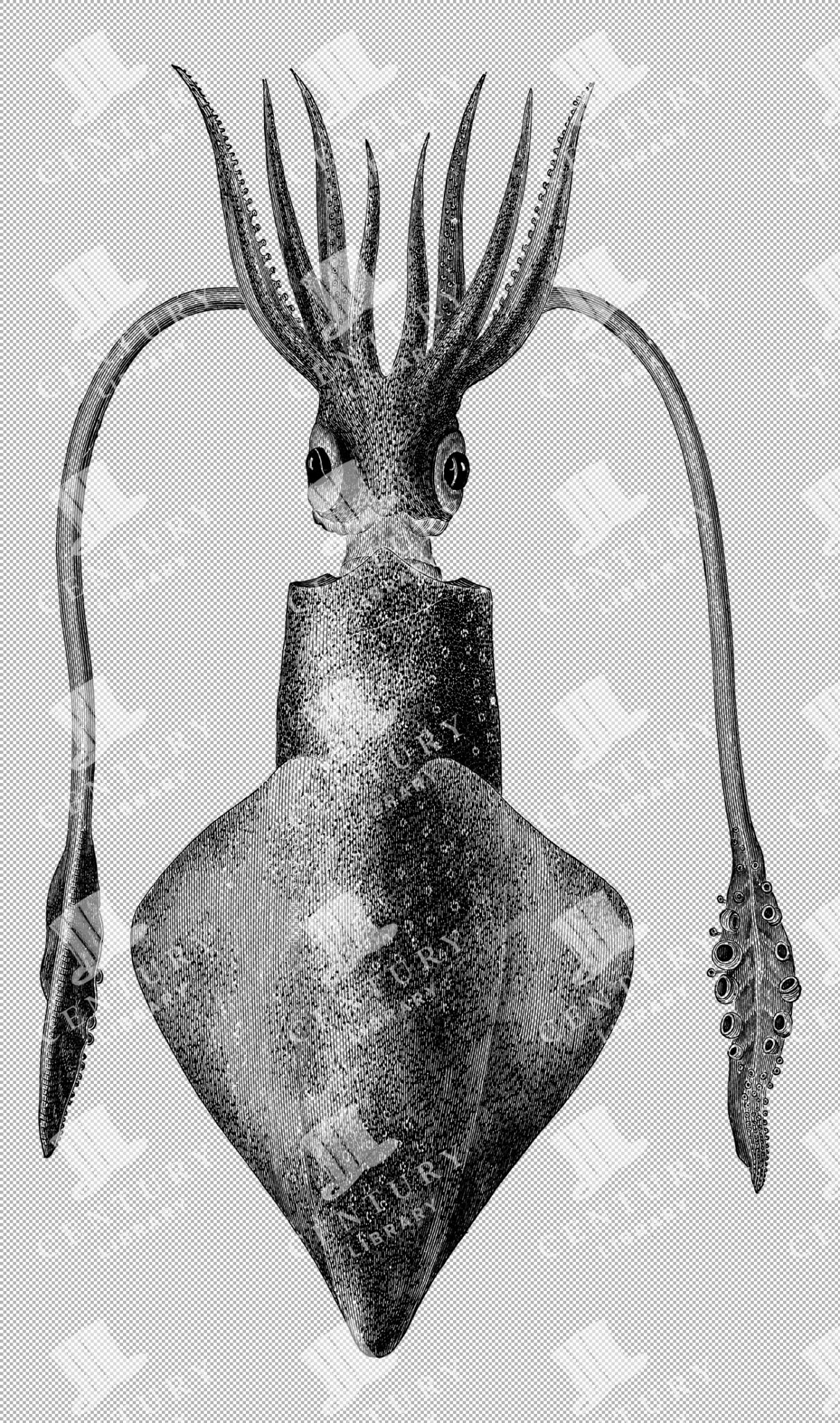

Common Squid with Tentacles and Large Eyes Illustration
This illustration features the common squid, focusing on its streamlined body, large eyes, and long tentacles. The artistic rendering captures the squid’s agility and predatory nature in aquatic environments, showcasing its anatomy in an elegant, detailed sketch.
- Resolution: 3599px x 6102px
- Image Type(s): PNG
Related Images
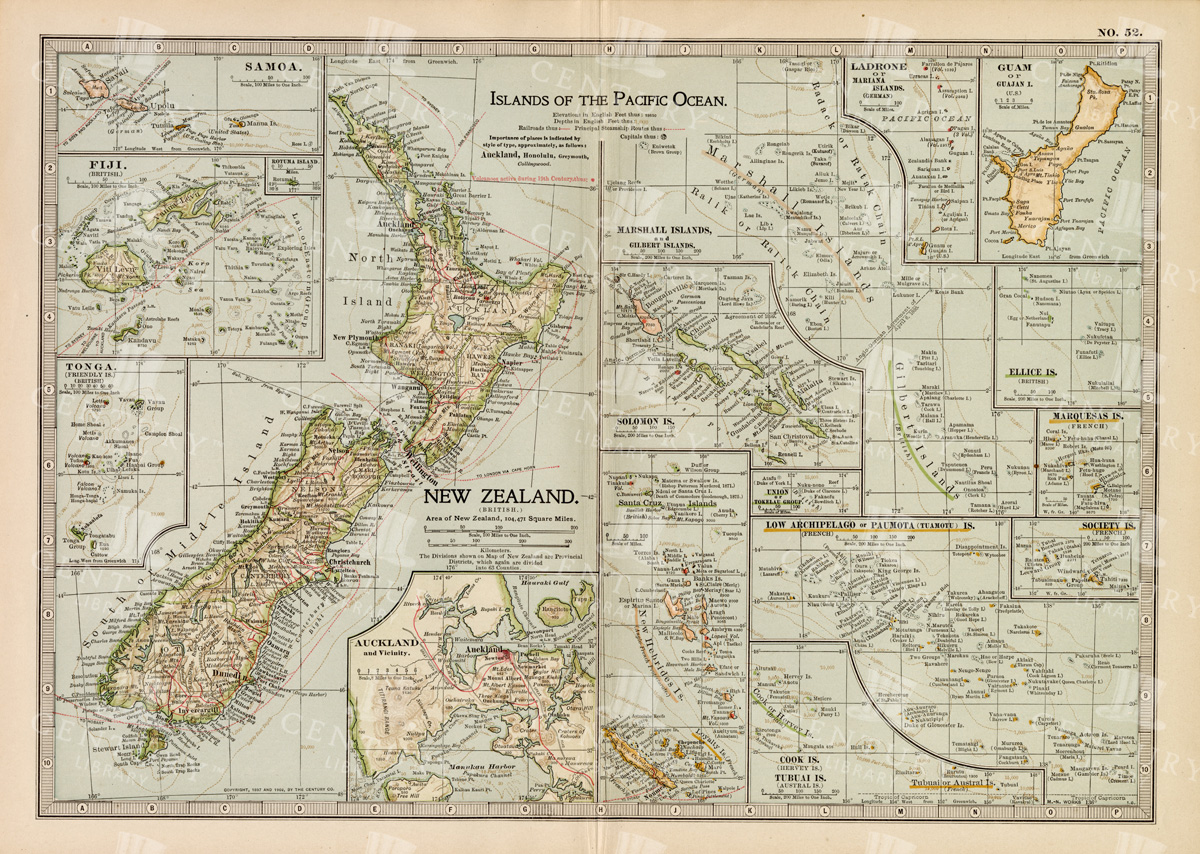

1897 Map of New Zealand and Pacific Islands
This vintage 1897 map provides a detailed view of New Zealand and surrounding Pacific islands, including Samoa, Fiji, Tonga, and others. It illustrates the geographical and political boundaries of the region during the late 19th century, offering insight into the exploration and colonization of the Pacific. The map’s historical significance is enhanced by its detailed cartography and the representation of various island groups.
- Resolution: 7150 x 5100
- Image Type(s): JPG
From this collection
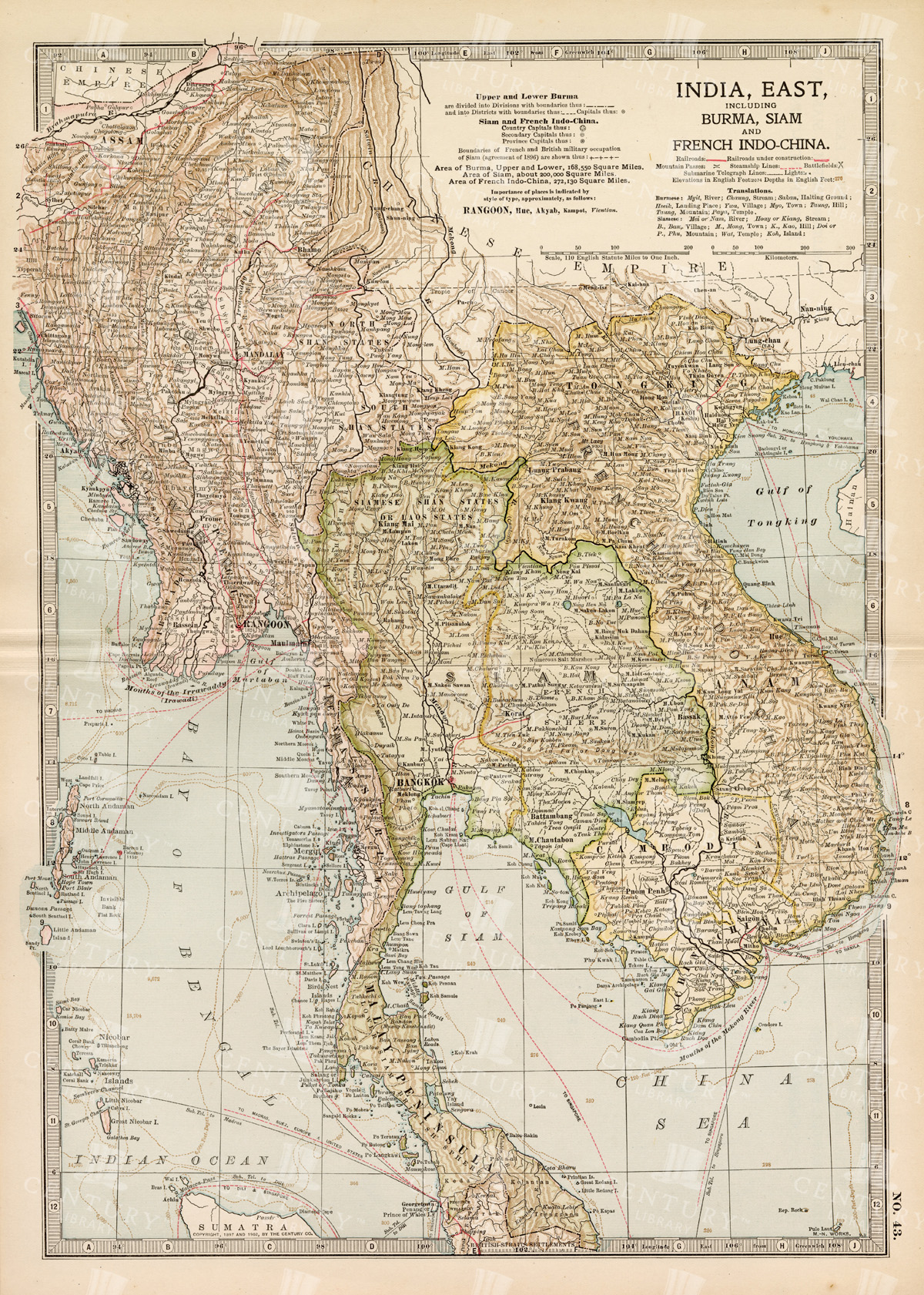

Antique Map of Eastern India, Burma, Siam, and French Indo-China
This antique map showcases Eastern India, Burma (now Myanmar), Siam (now Thailand), and French Indo-China (Vietnam, Laos, Cambodia), with a focus on the geopolitical boundaries and major cities of the early 20th century. The map provides a detailed view of the region’s topographical features, including rivers, mountain ranges, and coastlines, reflecting the historical context of Southeast Asia during this period.
- Resolution: 7143 x 5100
- Image Type(s): JPG
- early 20th century
- geopolitical boundaries
- coastlines
- cultural heritage
- mountain ranges
- French Indo-China
- Siam
- Burma
- Eastern India
- topography
- cities
- historical geography
- antique map
- historical map
- colonial
- exploration
- old map
- cartography
- Southeast Asia
- country
- representation
- Antique
- History
- Geography
- Atlas
- World
- Landscape
- Rivers
- Map
- Asia
From this collection
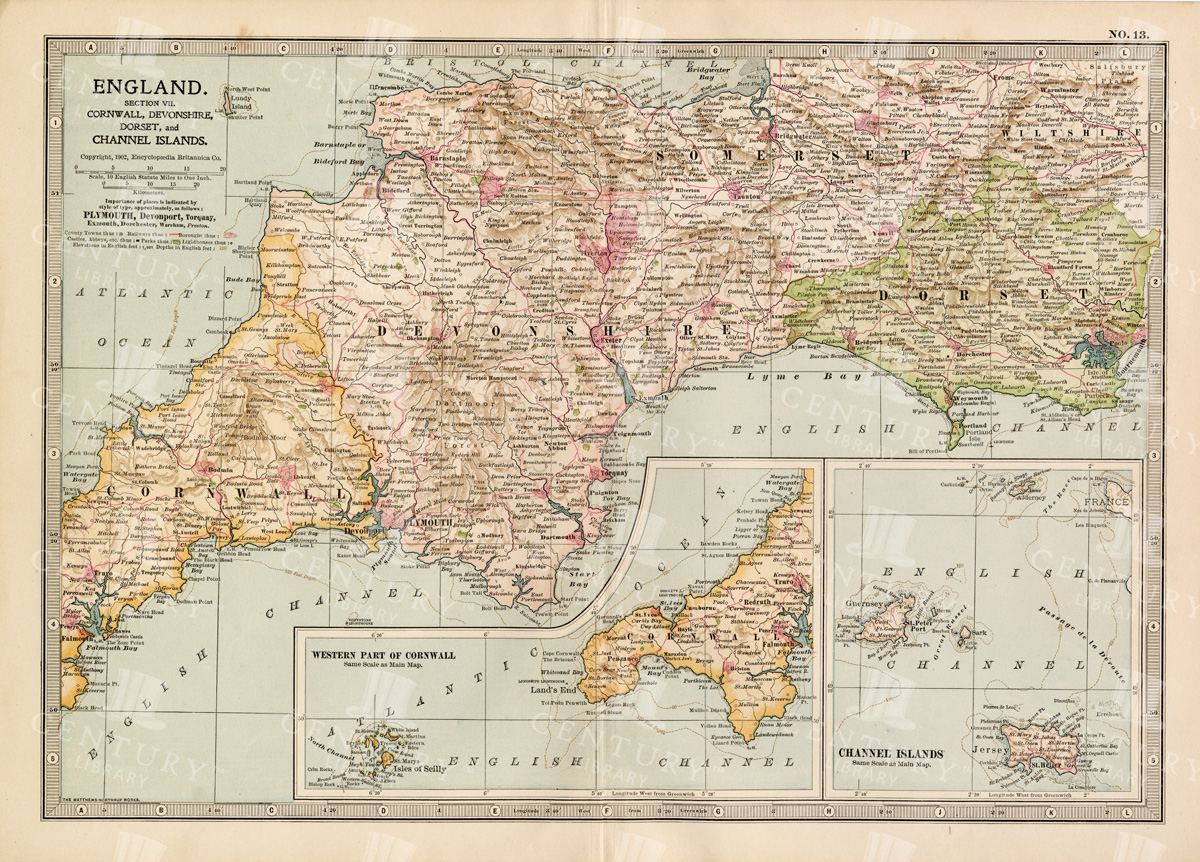

Historical Map of Cornwall, Devonshire, Dorset, and the Channel Islands
This historical map showcases the regions of Cornwall, Devonshire, Dorset, and the Channel Islands, detailing their towns, roads, and coastal features. The map is an essential resource for those interested in the historical geography of southern England. The vintage style and detailed cartography offer a unique insight into the area’s past, making it a valuable piece for collectors and history enthusiasts alike.
- Resolution: 7130 x 5100
- Image Type(s): JPG
- vintage england
- british geography
- england history
- dorset map
- devonshire map
- cornwall map
- southern england
- channel islands
- dorset
- devonshire
- english cartography
- detailed map
- english geography
- channel islands map
- vintage british map
- southern england map
- british vintage
- old england map
- coastal map
- england regions
- vintage cartography
- cornwall
- historical geography
- antique map
- historical map
- old map
- towns
- historical
- Roads
- vintage
- representation
- British History
- Geography
- Atlas
- World
- Map
From this collection
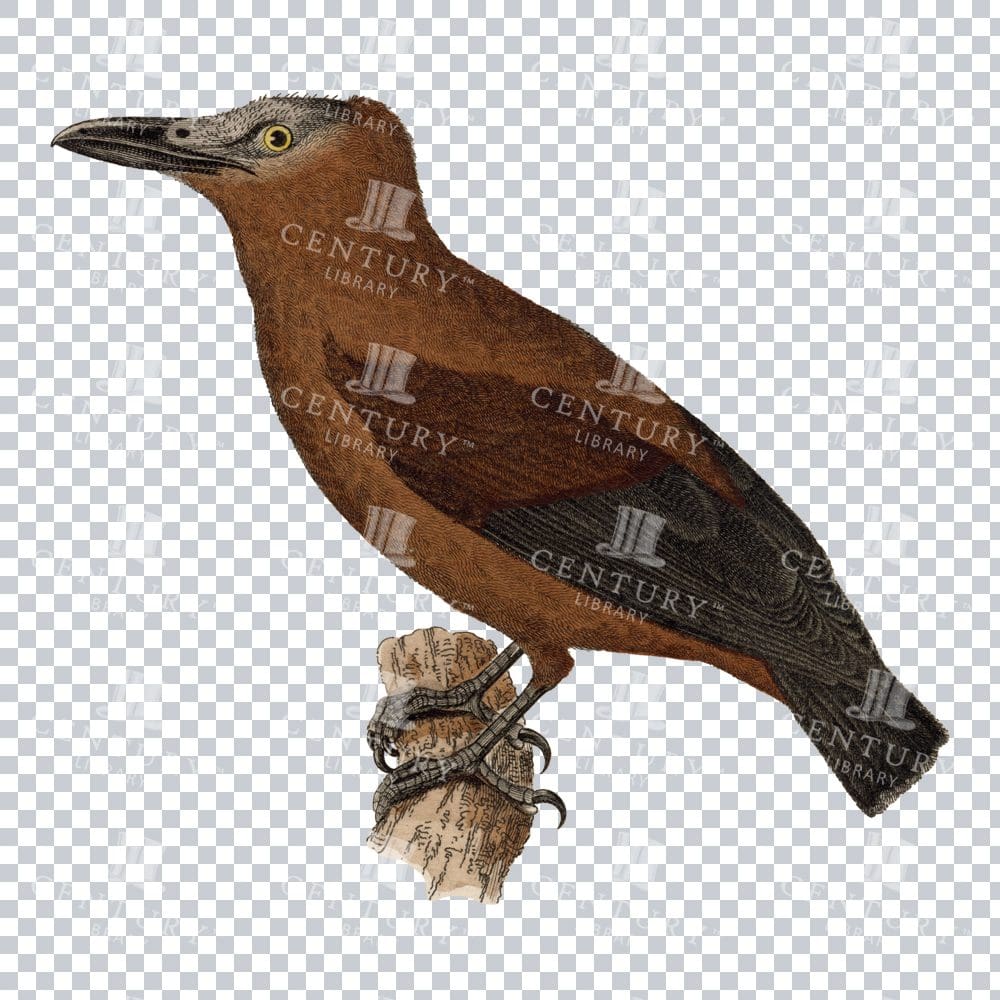

Coloured Isolated PNG of a Brown Necked Raven
- License Info
- Resolution: 3121 × 2835
- Image Type(s): PNG
From this collection


Vintage Decorative Ribbon Banner Designs
You’re looking at a vintage collection of beautifully illustrated design assets discovered in a late 1800s design book. These illustrations were extracted from their original backgrounds and converted to the following image formats: SVG (vector), EPS (vector), and, of course, PNG (300dpi raster image with transparent background).
- Image Type(s): EPS, SVG, PNG
Related Images
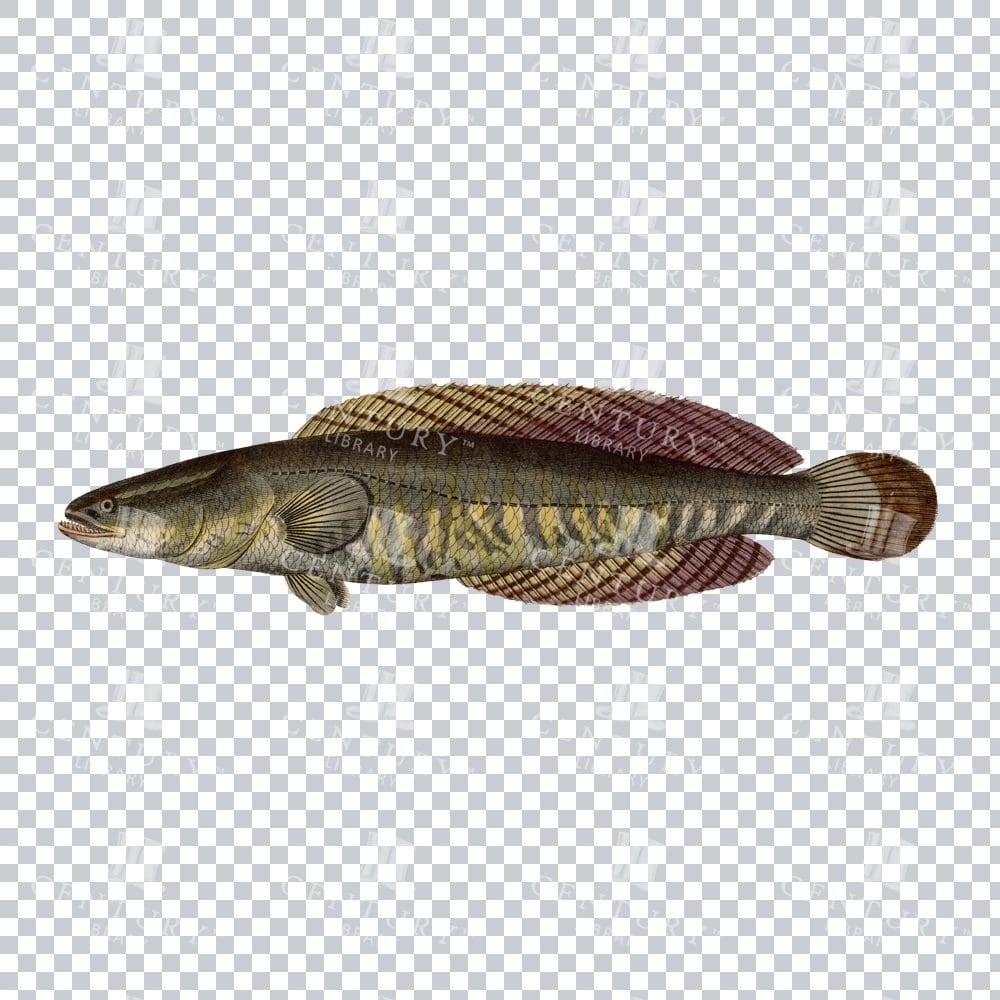
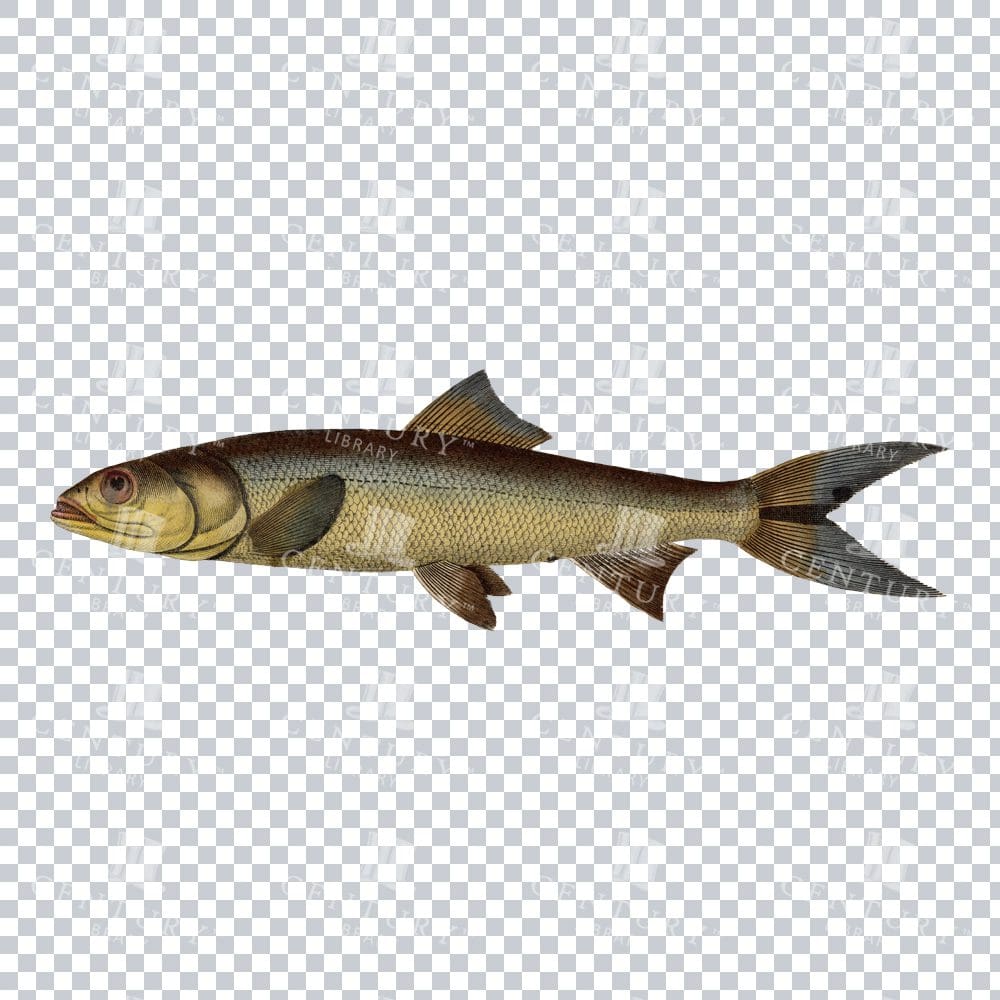
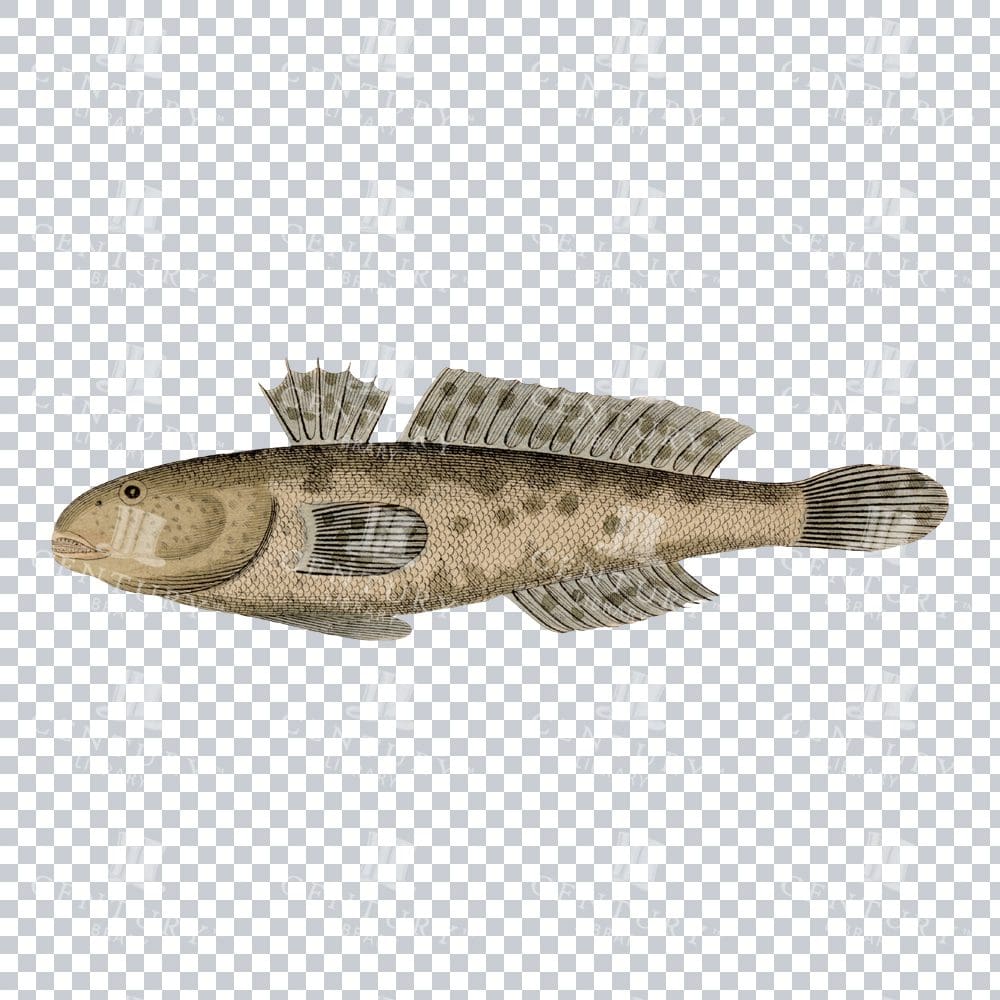
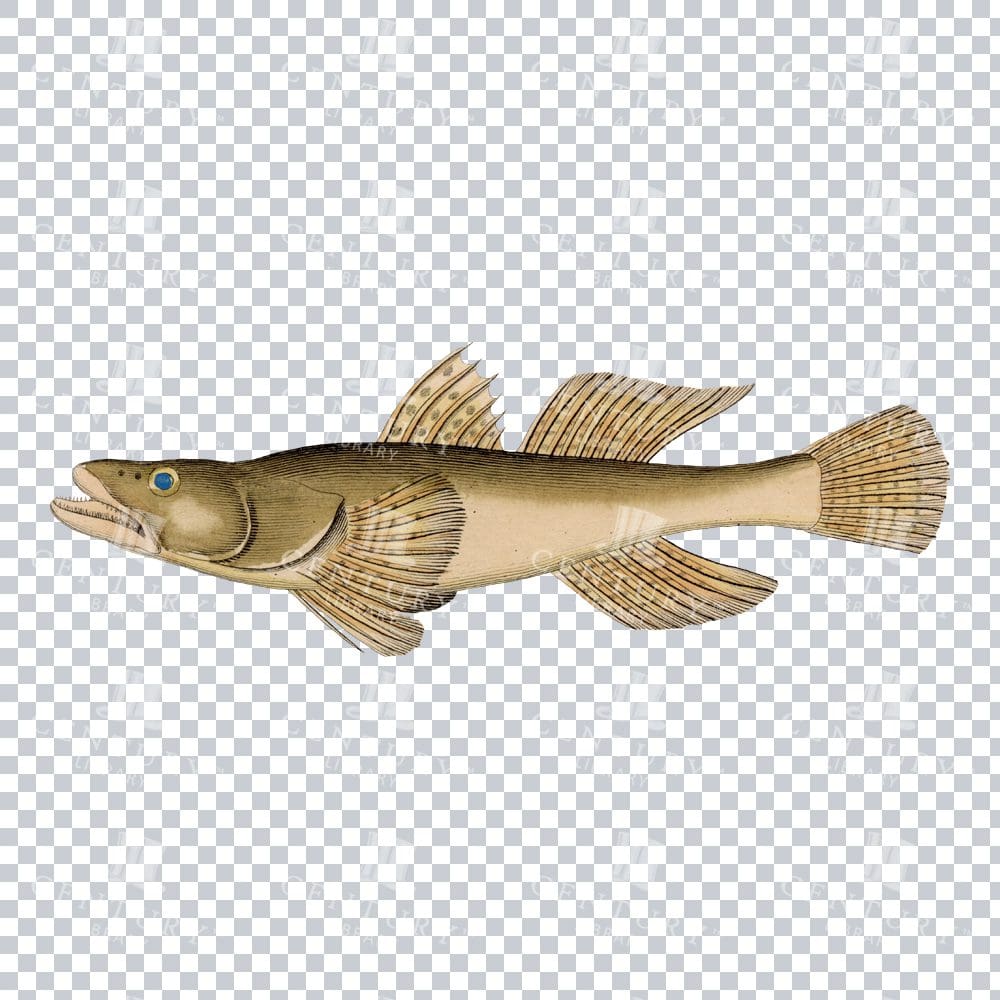
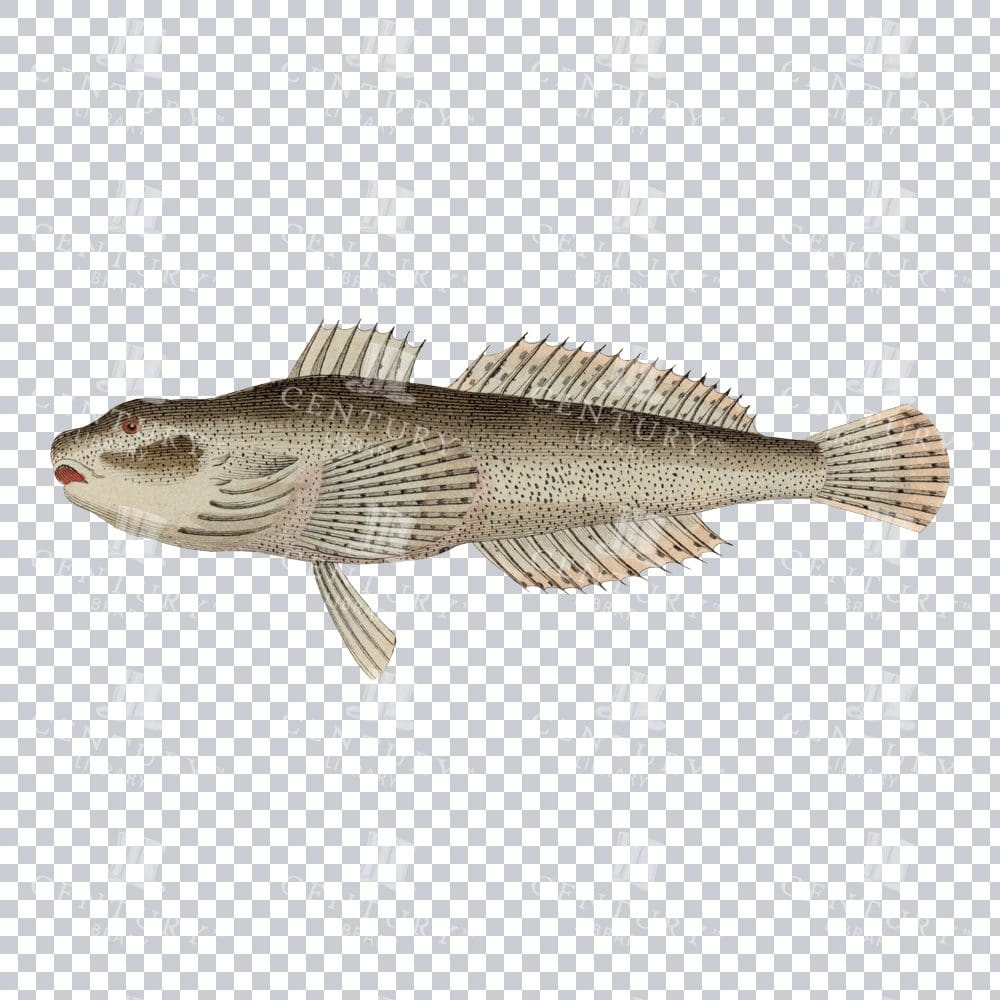

Vintage Colored Illustration of a Cottus Fish
- License Info
- Resolution: 3361 × 1354
From this collection
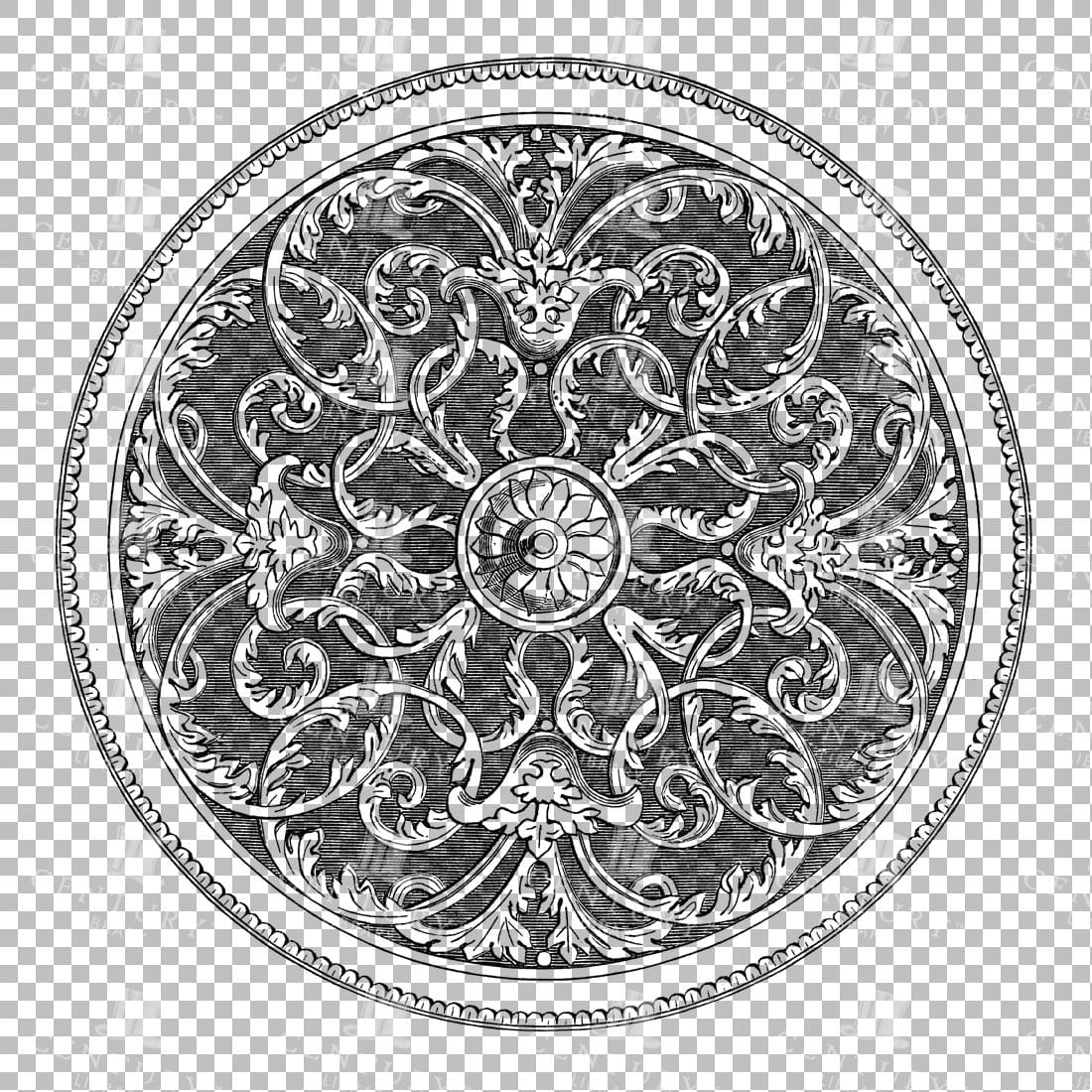

Vintage Decorative Line Art Illustration – Floral – Border – Frame – Pattern No.28
- License Info
- Resolution: 3420px x 3396px
Related Images
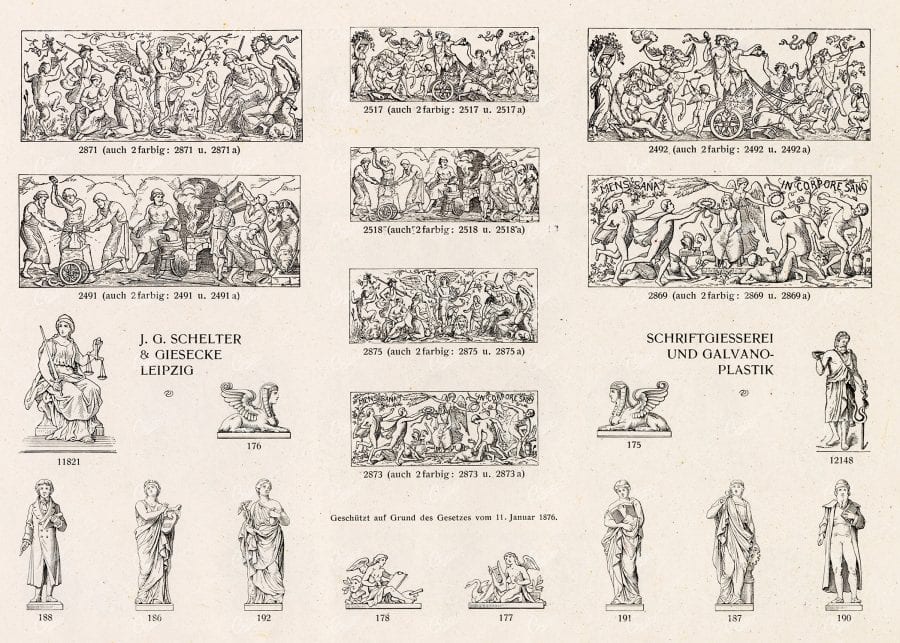
Support the Library
Our supporters and members help us continue collecting and restoring these wonderful pieces of art for the modern creator
Unlock Everything and Become a Member!
While a lot of the library is available for free, some is kept behind closed dusty doors only to be accessed by our lovely members.
